We Served Wine on a Silver (Vacuum) Platter
The World's First International Disk Recording and Mastering Convention: July 2023
We have been recording grooves on flat disks, modulated by sound, for 136 years now. Emile Berliner invented the disk gramophone in 1887, a decade later than the cylinder phonograph of Thomas Edison, which was the first device to record sound that could subsequently be played back as sound. Many improvements and refinements were to follow, leading up to the high fidelity stereophonic vinyl records, which were to become so popular as to propel the entire industry surrounding them to the giddy heights of one of the world's most profitable ventures, a position that was to be maintained for several decades.
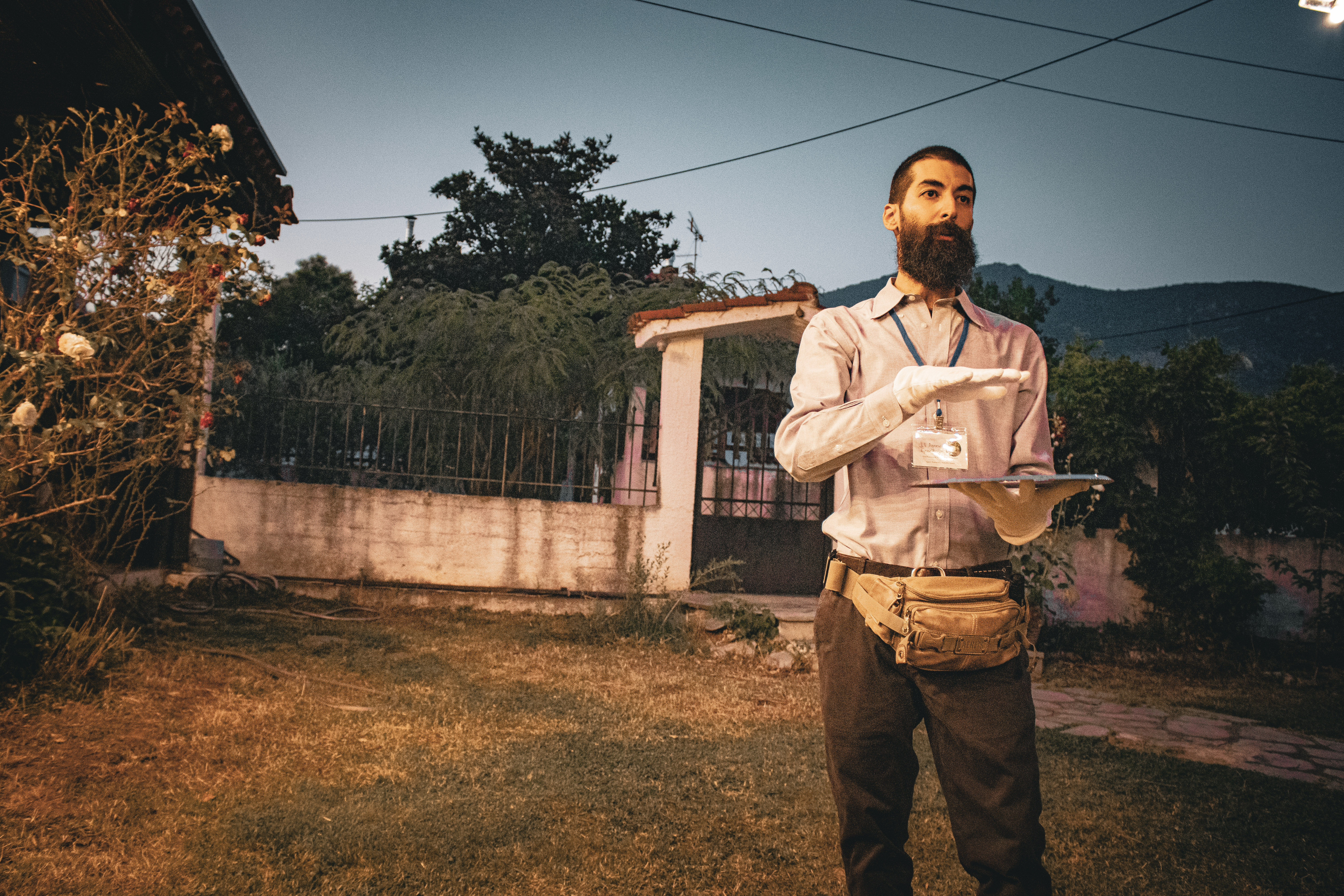 J. I. Agnew (Agnew Analog) holding a stamper, while expounding upon the technical aspects of the vinyl record manufacturing process.
J. I. Agnew (Agnew Analog) holding a stamper, while expounding upon the technical aspects of the vinyl record manufacturing process.
Trade associations were formed, dedicated to sound recording, acoustics, broadcasting, composers, performers, and publishers of music, supported by various large and small record companies from around the world. However, disk mastering, the very first stage of record manufacturing, has always been and still largely remains an obscure sector, a black art practiced by very few, in buildings that often bear no signage detailing the activities that take place within, behind doors sealed airtight.
Technical details of disk mastering system configuration, modifications and upgrades were closely guarded secrets of the trade. The principle was that “loose lips sink ships”, up until CD sales took over, when, in a frenzied attempt to free up sufficient floorspace for optical disk manufacturing, disk mastering lathes and record presses were even sunk to the bottom of the ocean (this actually happened), to ensure that the “enemy” would not be able to use these weapons against the modern path of progress, hailed as the “perfect sound forever”.
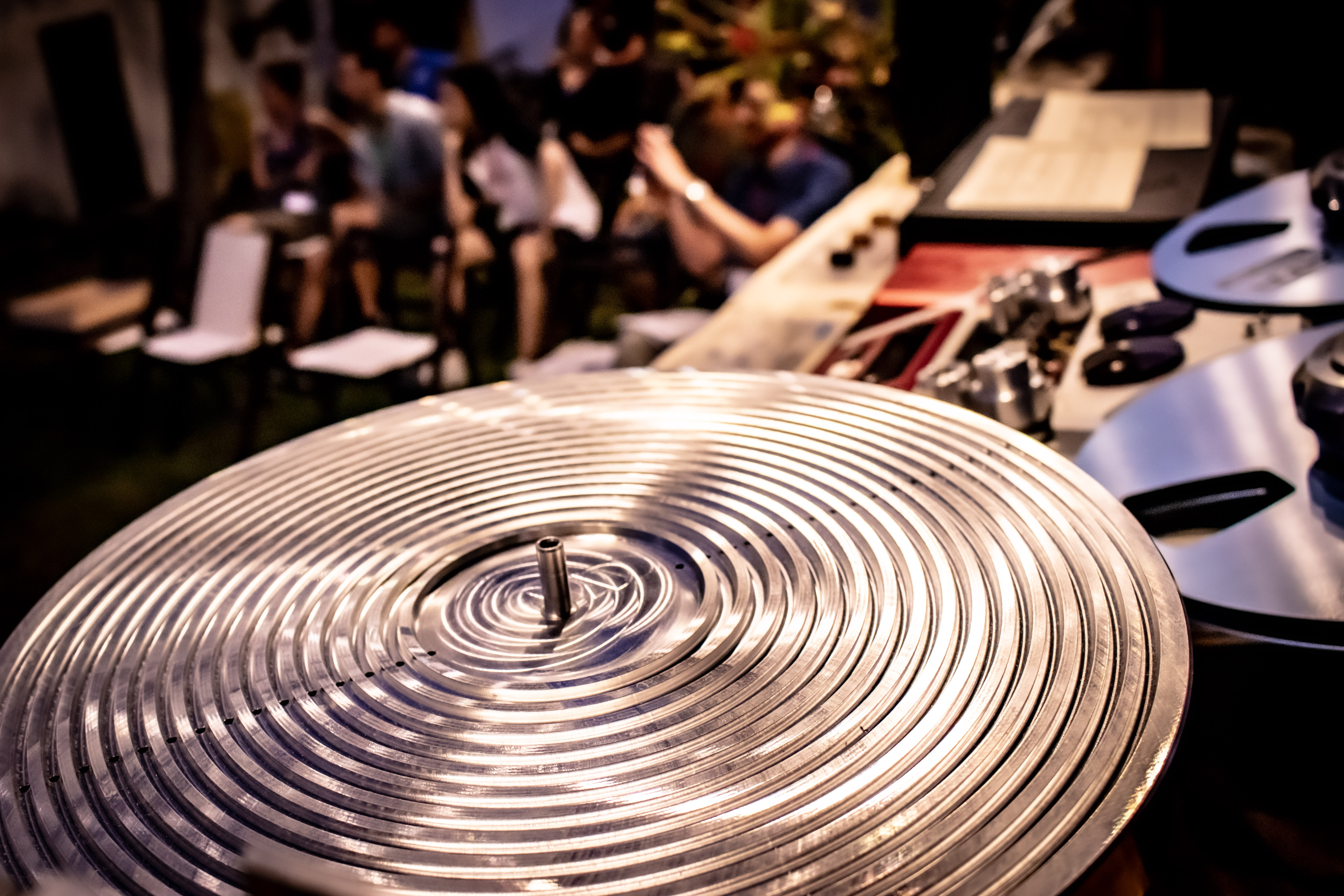 Lathe vacuum platter and tape machine in the background.
Lathe vacuum platter and tape machine in the background.
Over the course of 60 years, from 1930 to 1990, a grand total of around 1200 disk mastering lathes were manufactured, with only about half of them set up to cut stereophonic records. In the stereophonic era, these were largely made by two companies. Scully lathes were made in Bridgeport, CT and were often paired with Westrex cutter heads and electronics, while Neumann lathes were made in Berlin, Germany. The latter operation is known to have never been a profitable venture, financed as a prestige project, from Georg Neumann’s personal wealth, which was largely built up during the Nazi era. At any given time throughout history, the total number of disk mastering engineers active around the world was well under 200 and at times, fewer than 100 people were adequately skilled to practice this rare craft. There is a good reason why the only internet forum dedicated to record cutting is called “The Secret Society of Lathe Trolls”!
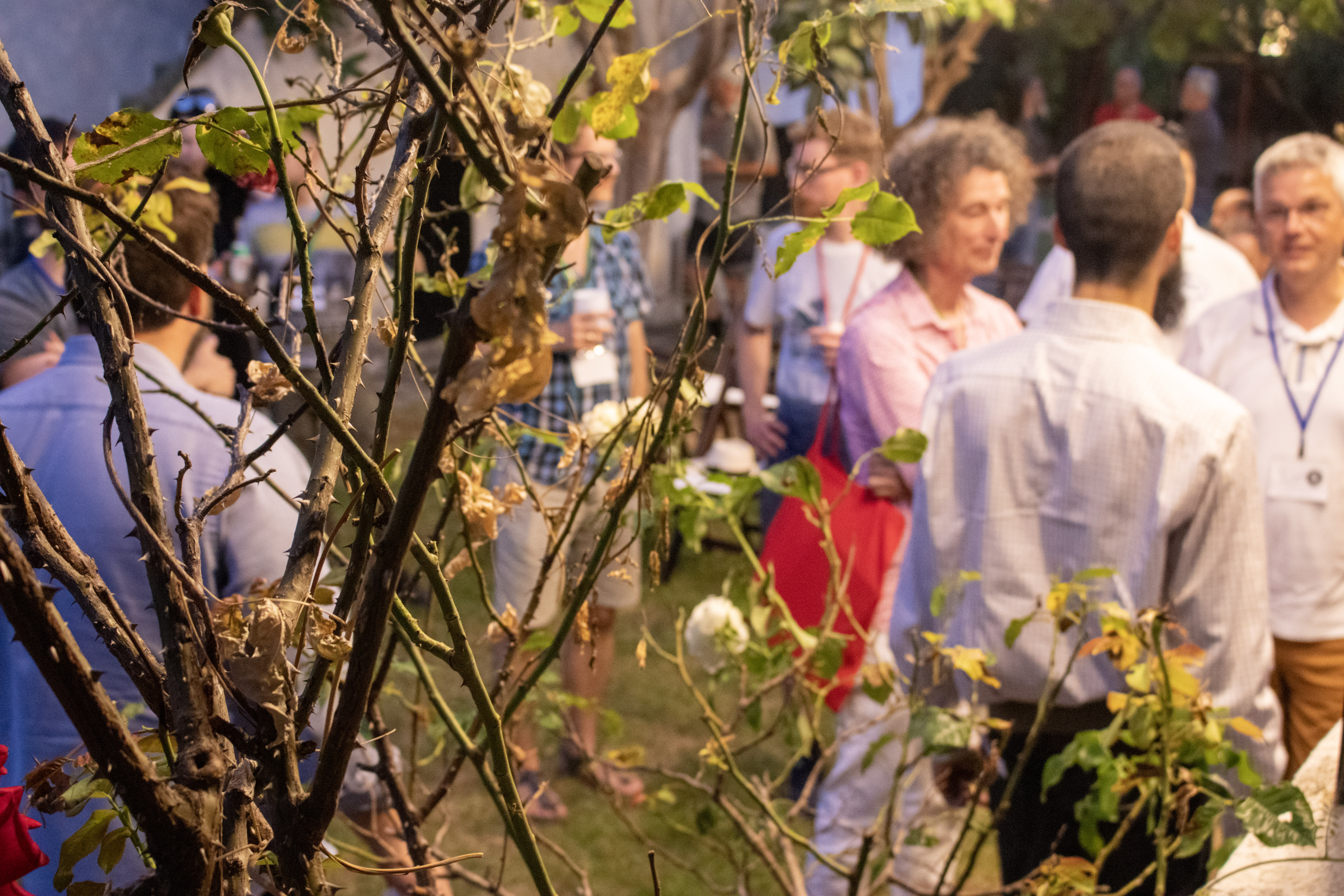 Disk Mastering Engineers and related professionals meet.
Disk Mastering Engineers and related professionals meet.
But perhaps the most indicative fact is that it took 136 years of disk recording for an international convention to be organized, exclusively dedicated to disk recording and mastering. This historic event was hosted at the Agnew Analog Precision Engineering Laboratory in Halkidiki, Greece, on July 15, 16 and 17, 2023, bringing together for the very first time approximately 40 cutting engineers from around the world.
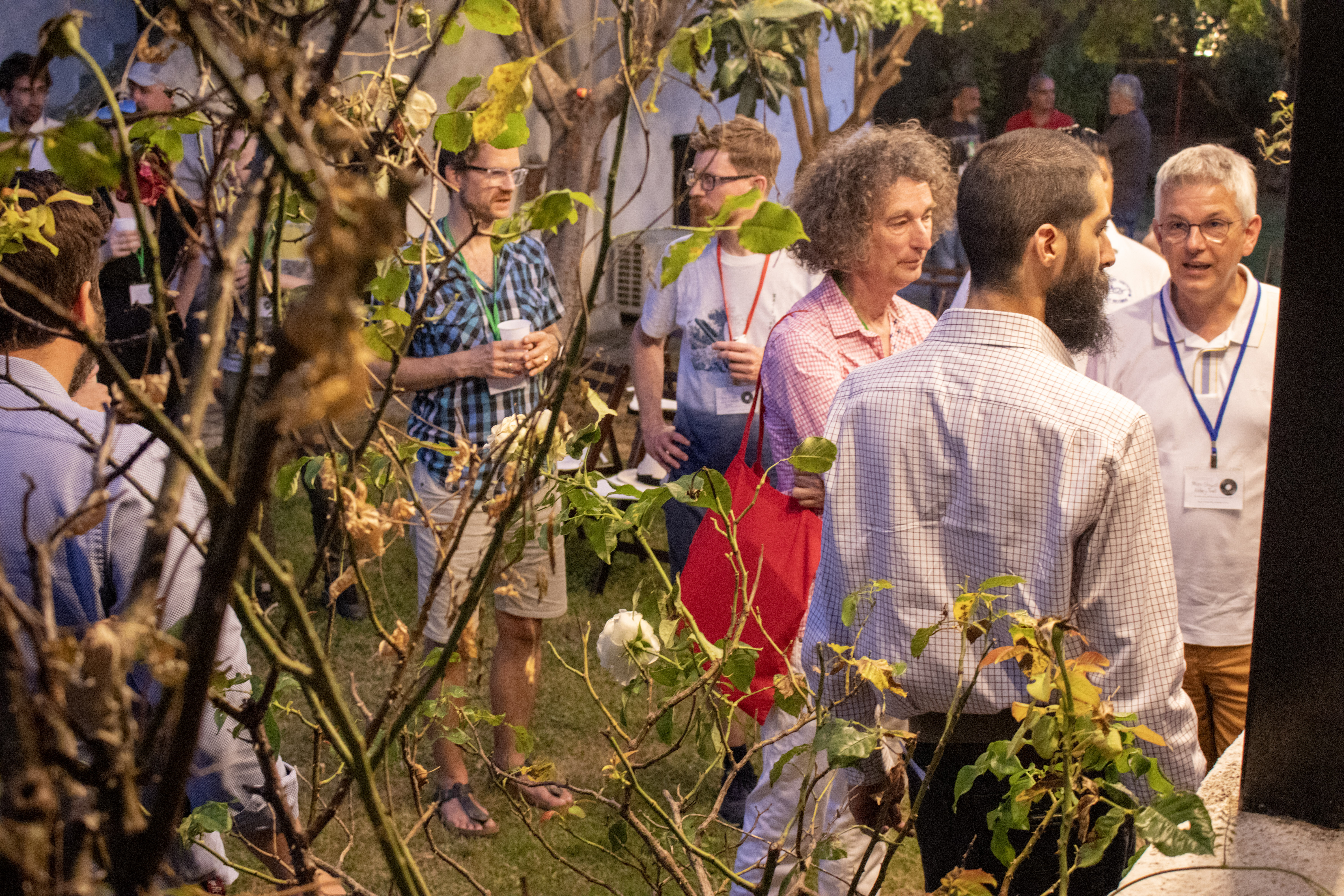 Left to right, top to bottom: Tassos Ganoulis (Agnew Analog), Sergio Avila Diaz (Phono Recs), George Bokos (Grindhouse Studio Athens/Spine Audio), Gregory Karakatsanis (Spine Audio/Intelspes), Yannis Chronopoulos (Mastering Engineer at Columbia and Polygram), Janis Aslanidis (Well of Souls Studio), Stevan Krakovic (Electronic Memory Studio), Rene Wiedner (Warwick Business School), Crispin Murray (Guilde Productions Ltd), J. I. Agnew (Agnew Analog), Miles Showell (Freelance Mastering Engineer at Abbey Road)
Left to right, top to bottom: Tassos Ganoulis (Agnew Analog), Sergio Avila Diaz (Phono Recs), George Bokos (Grindhouse Studio Athens/Spine Audio), Gregory Karakatsanis (Spine Audio/Intelspes), Yannis Chronopoulos (Mastering Engineer at Columbia and Polygram), Janis Aslanidis (Well of Souls Studio), Stevan Krakovic (Electronic Memory Studio), Rene Wiedner (Warwick Business School), Crispin Murray (Guilde Productions Ltd), J. I. Agnew (Agnew Analog), Miles Showell (Freelance Mastering Engineer at Abbey Road)
Greece may seem like an unlikely destination for such an event, at first glance. After all, the domestic recording industry was never that huge. However, Greece is currently home to several disk record cutting facilities, two manufacturers of disk recording stylii, a large number of export-oriented record labels and a manufacturer of brand new disk mastering lathes and cutter heads.
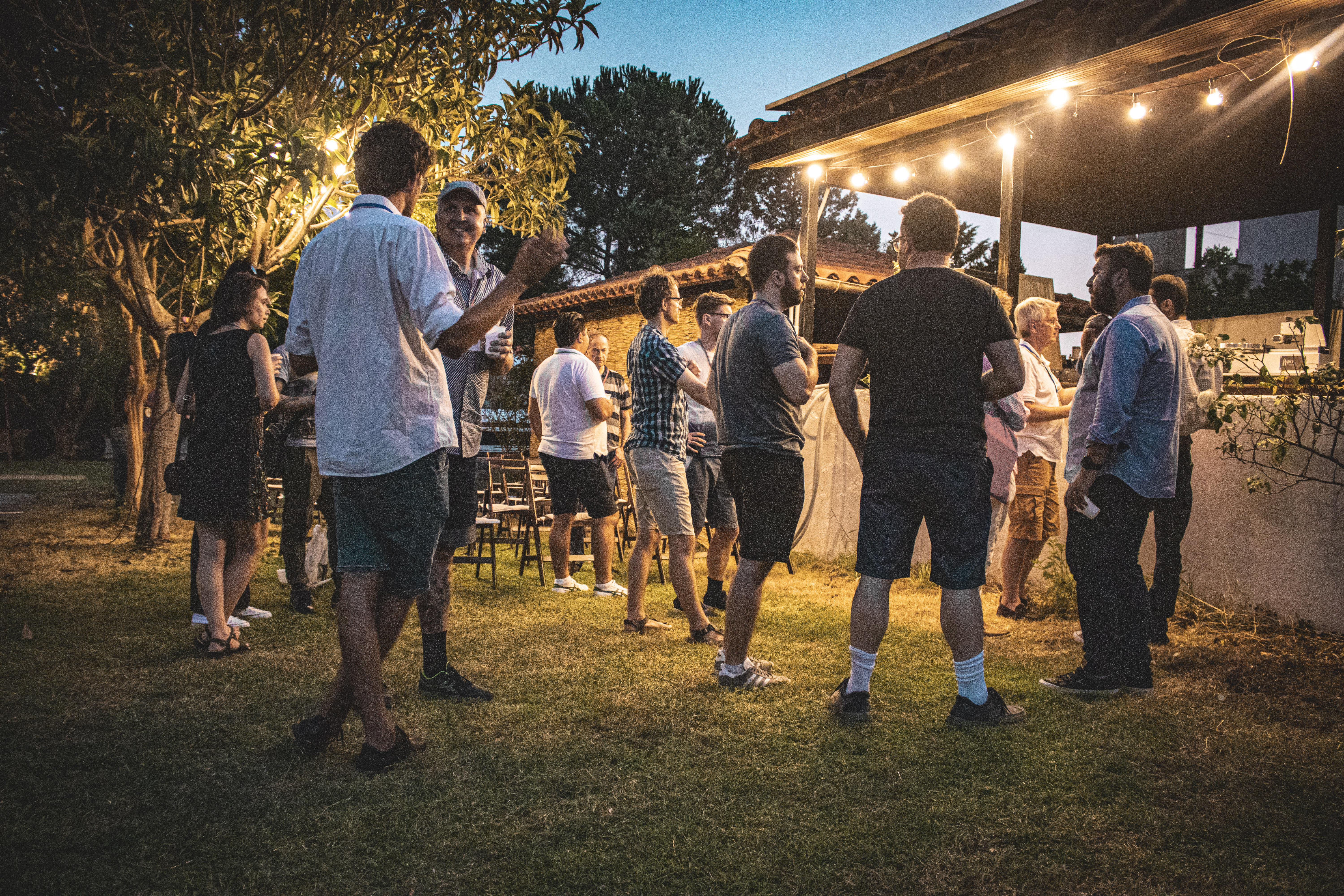 Disk Mastering Engineers mixing and mingling.
Disk Mastering Engineers mixing and mingling.
The first day was also an open day to this exclusive invitation-only event for industry professionals and insiders, which gave Sound Engineering students from the local community colleges and others who would be interested in diving deeper into this topic, the opportunity to attend.
Greece is home to a large number of community colleges offering audio engineering courses, producing an average of around 3500 graduates per year in total. However, despite the resurgence of the vinyl record over the past several years and the growing demand of suitably skilled professionals to staff the new mastering facilities and record pressing plants popping up everywhere, none of the educational establishments offer training on any aspect of record manufacturing. The interest among students is high, as evidenced by the enthusiastic participation of the student community as volunteers at the event.
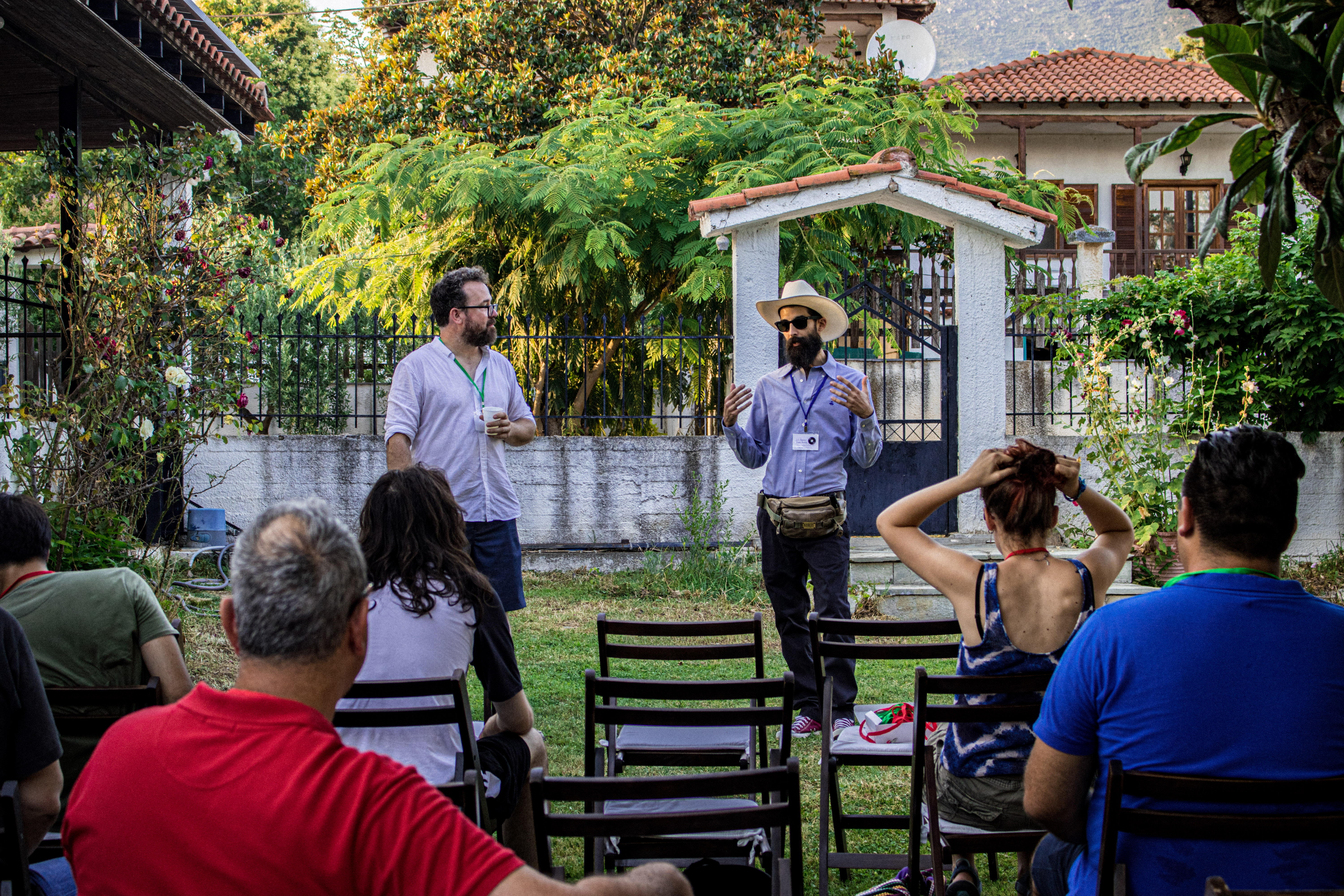 Michael Dixon (Lathecuts.com) and J. I. Agnew (Agnew Analog) (left to right) introducing the convention.
Michael Dixon (Lathecuts.com) and J. I. Agnew (Agnew Analog) (left to right) introducing the convention.
A presentation held by Michael Dixon (the proprietor of LatheCuts.com, Mobile Vinyl Recorders and recordlatheparts.com, from Tucson, AZ) and myself, introduced the basics of record cutting and detailed the differences between lacquer and DMM master disks, fathers, mothers, stampers, pressed records, dubplates and one-off plastic records, explaining the various different technologies that are still presently in use, along with a historical overview of techniques and equipment used throughout the last century.
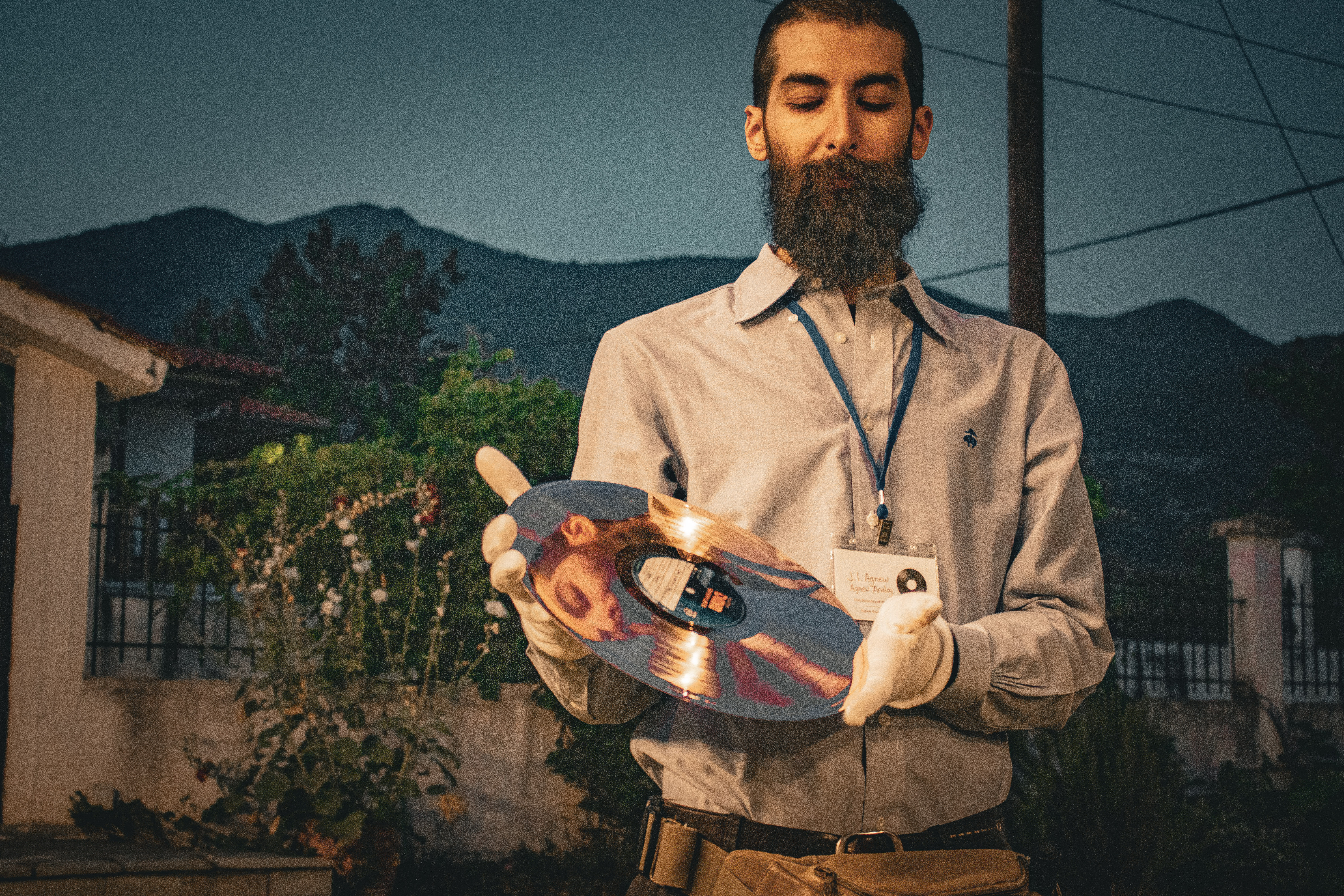 J. I. Agnew describing the Direct Metal Mastering process (DMM), while holding the Stockfisch Records DMM Dubplate Vol. 1, cut by Gunter Pauler.
J. I. Agnew describing the Direct Metal Mastering process (DMM), while holding the Stockfisch Records DMM Dubplate Vol. 1, cut by Gunter Pauler.
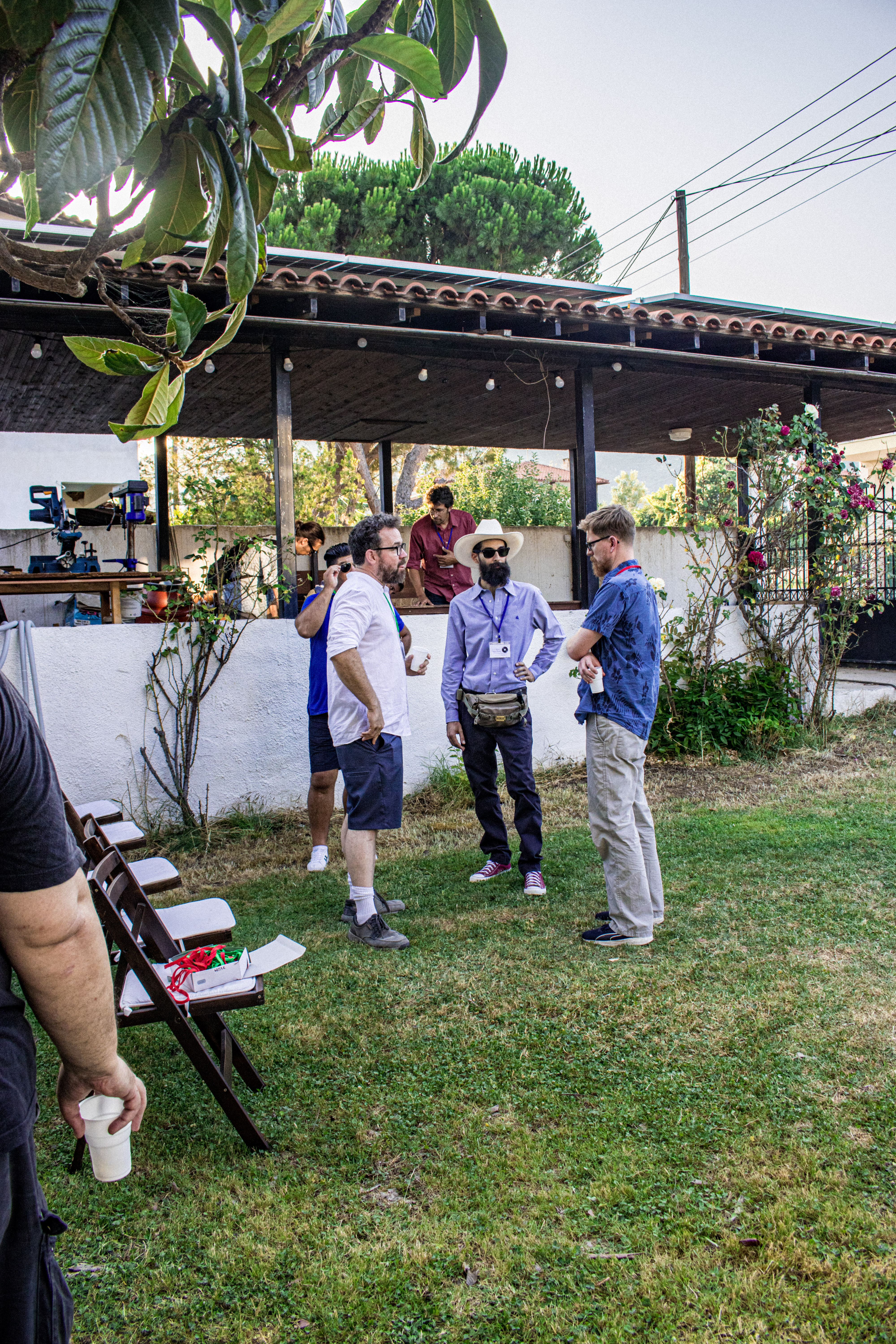 Michael Dixon (Lathecuts.com), J. I. Agnew (Agnew Analog) and Rene Wiedner (Warwick Business School) in the foreground, exchanging notes. Tasos Alexopoulos (Epos Labs), Tassos Ganoulis (Agnew Analog) and volunteers from the student community in the background, setting up a display. The solar panels on the roof powered the entire convention and the Agnew Analog facility, which is off the grid.
Michael Dixon (Lathecuts.com), J. I. Agnew (Agnew Analog) and Rene Wiedner (Warwick Business School) in the foreground, exchanging notes. Tasos Alexopoulos (Epos Labs), Tassos Ganoulis (Agnew Analog) and volunteers from the student community in the background, setting up a display. The solar panels on the roof powered the entire convention and the Agnew Analog facility, which is off the grid.
Michael Dixon is a known figure in the American underground, specializing in small runs of "lathe cut" records, where the grooves are embossed on blank polycarbonate plastic disks and the records are cut one by one. He has taken it upon himself to rescue as many pre-WWII monophonce lo-fi lathes as he can get his hands on, getting them to working condition and selling them on. He has also been organizing a series of "lathe cut camps" at his "Lathe Cave" in Tucson, AZ, which are always sold out. At these camps, newcomers to this field are initiated into the art of making lo-fi records with a bare minimum of resources.
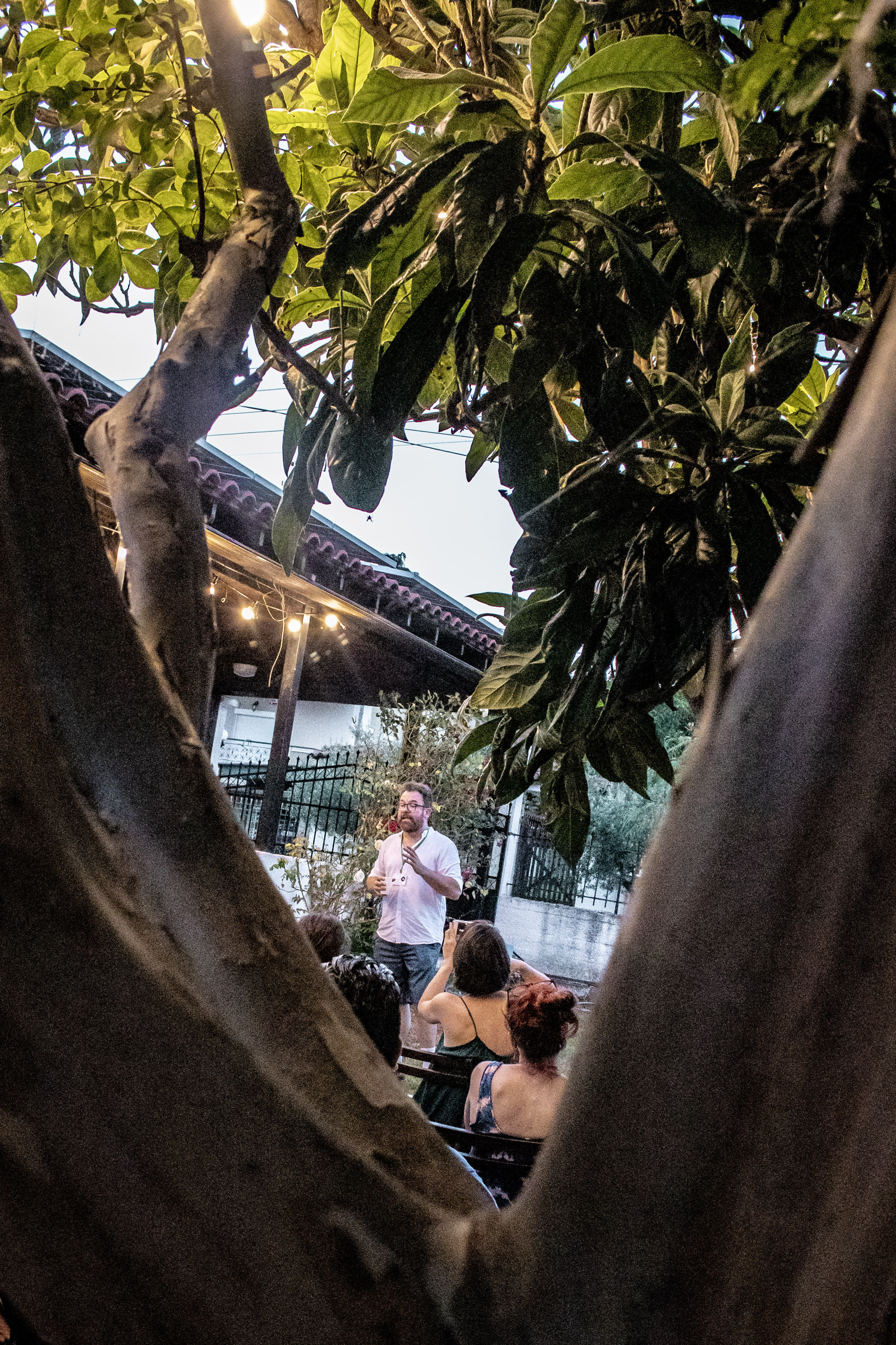 Michael Dixon (Lathecuts.com) addressing the audience.
Michael Dixon (Lathecuts.com) addressing the audience.
During his presentation, he spoke about the process of making small runs of lathe cuts, and explained the differences to dubplates on lacquer, plastics cut with a diamond, and traditional pressed records.
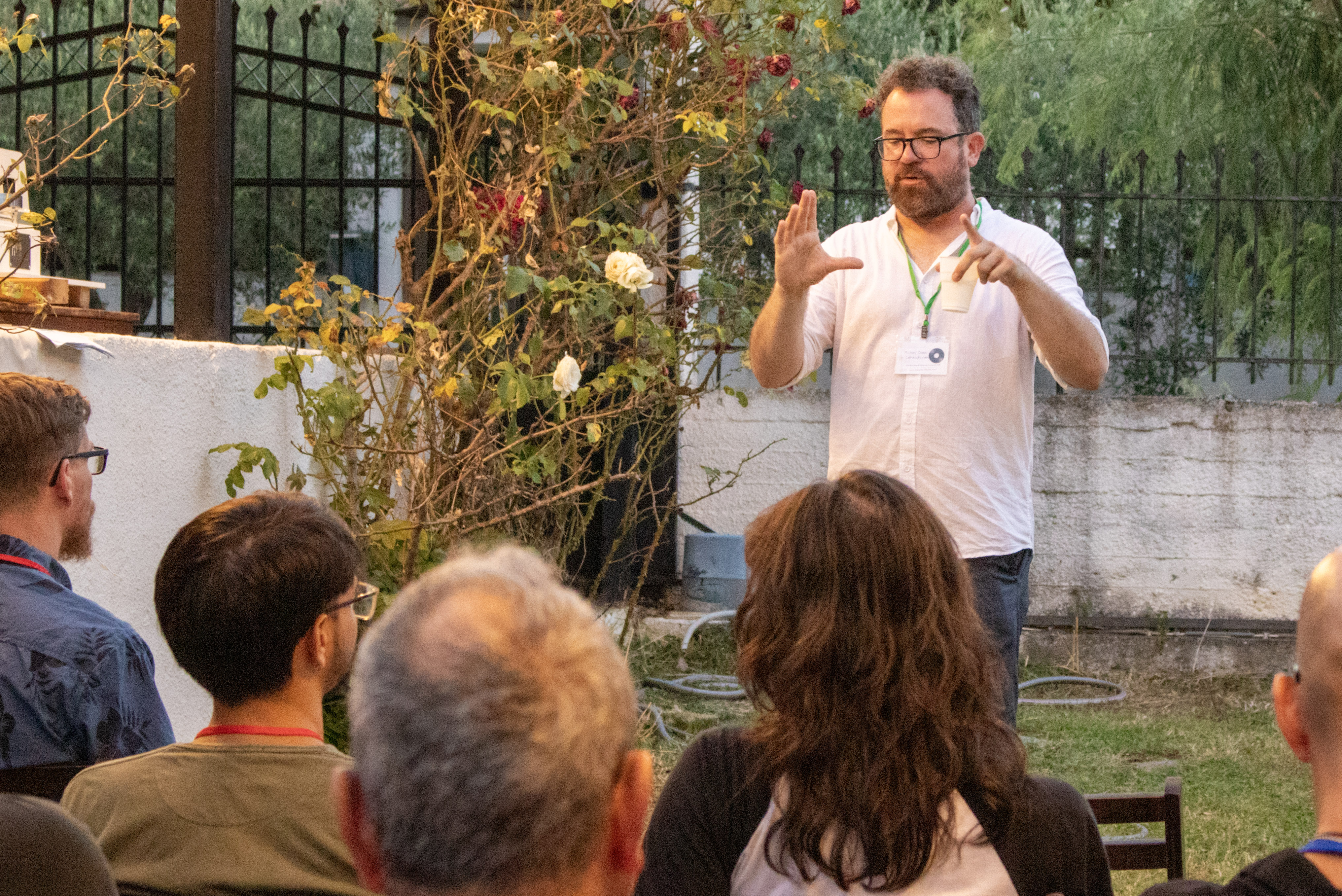 Michael Dixon (Lathecuts.com) in his trademark "holding the invisible record" pose.
Michael Dixon (Lathecuts.com) in his trademark "holding the invisible record" pose.
Picking up where Michael left off, I demonstrated to an excited audience actual examples of lacquer master disks, metal fathers, metal mothers and stampers, DMM masters, and the final product of the traditional manufacturing process, the vinyl record.
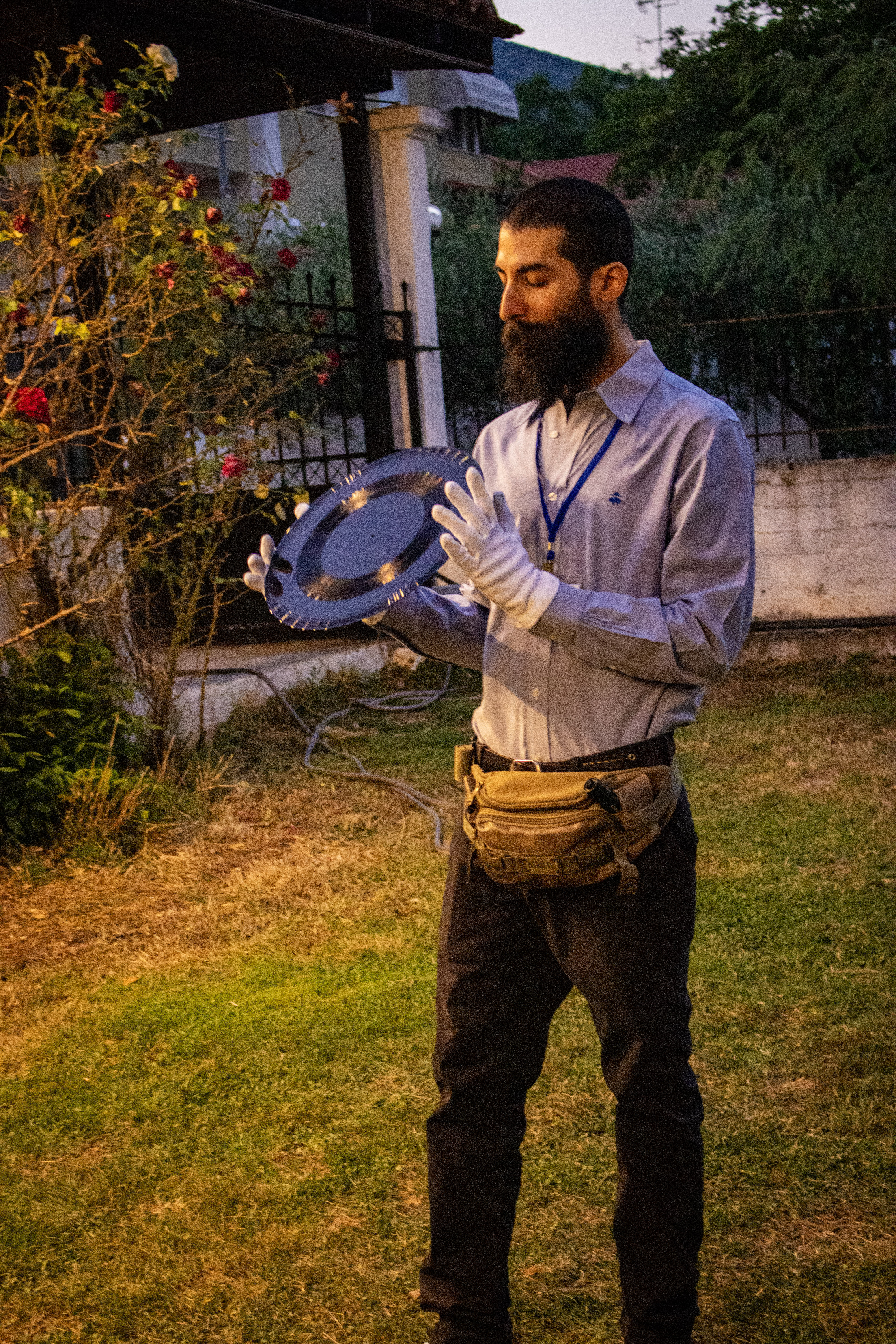
J. I. Agnew (Agnew Analog) holding a lacquer master disk with the cut grooves reflecting light.
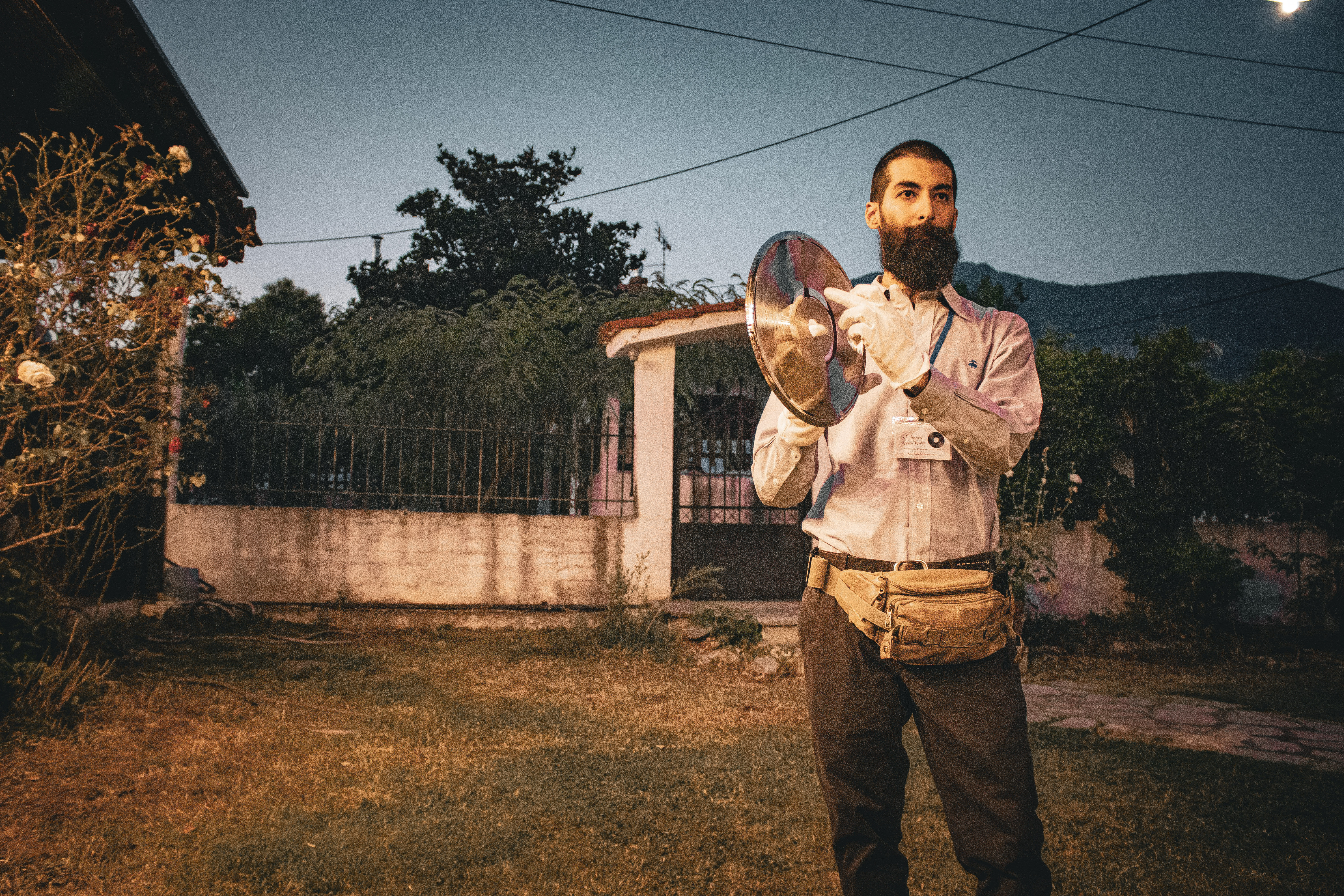 The metal stamper is the product of the plating process (the second stage of vinyl record manufacturing), held up here by J. I. Agnew (Agnew Analog).
The metal stamper is the product of the plating process (the second stage of vinyl record manufacturing), held up here by J. I. Agnew (Agnew Analog).
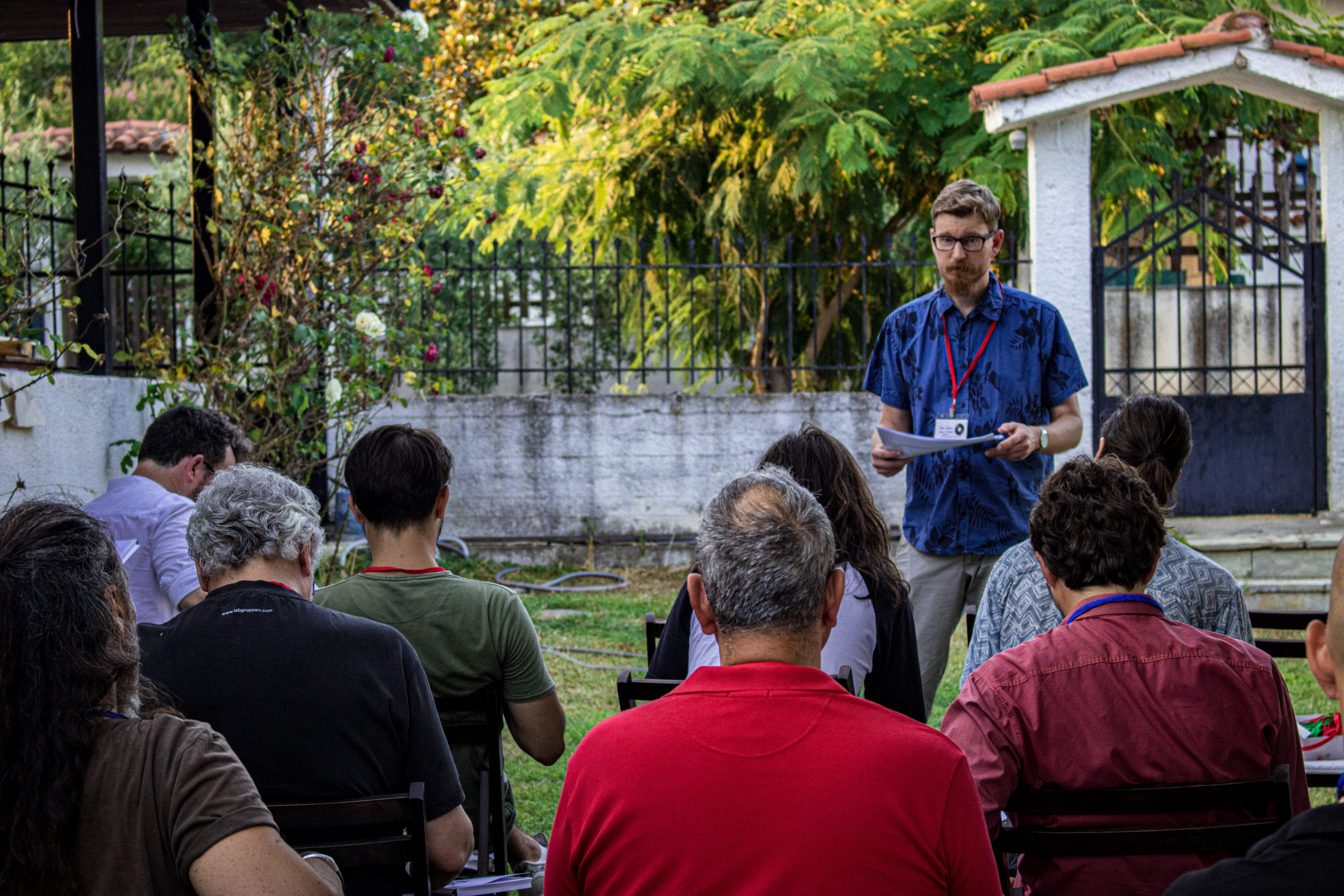 Dr Rene Wiedner (Warwick Business School) bridging the gap between the academic world and the vinyl record manufacturing industry.
Dr Rene Wiedner (Warwick Business School) bridging the gap between the academic world and the vinyl record manufacturing industry.
Dr. Rene Wiedner, Associate Professor of Organization Theory at Warwick Business School in the UK, who has been conducting in-depth research into the inner workings of our industry, offered a most exciting presentation on "Recent Developments, Growth, and Business Models in the Vinyl Record Manufacturing Industry”. The business owners in the audience were taking notes and there was lot of interaction and audience participation. Dr. Wiedner is to the vinyl record manufacturing industry what Hunter S. Thompson was to the Hells Angels, but in a more academic context and without any incidents of physical violence inflicted upon him... Well, at least not yet... In fact, 99% of disk mastering engineers are really nice people, it is the ones wearing the 1% patch that you need to watch out for!
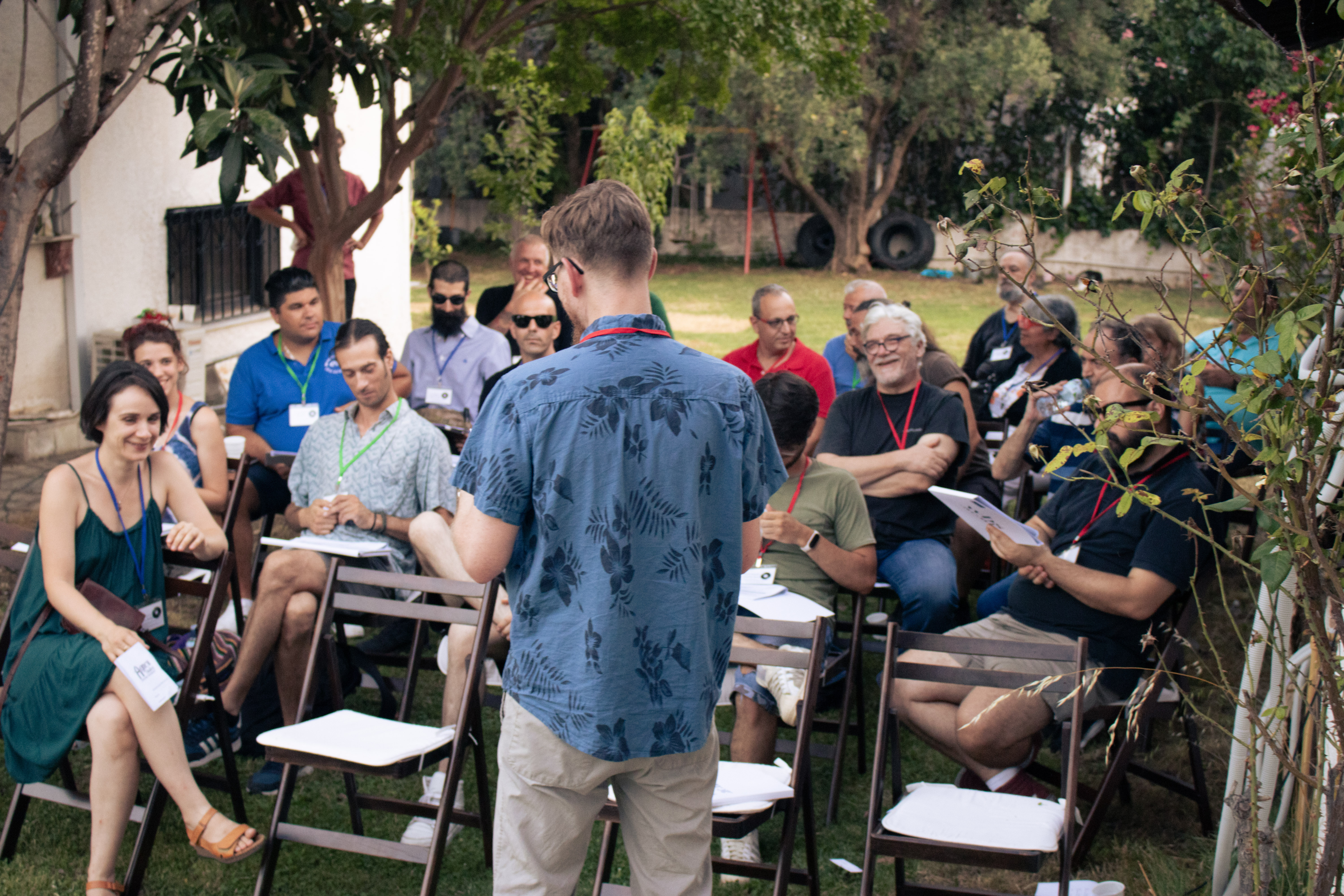 Rene Wiedner interacting with the audience during his presentation.
Rene Wiedner interacting with the audience during his presentation.
In an eclectic mix of gonzo journalism, academic discourse, business jargon, insider jokes, the affection of a biographer towards his subject and an evident passion for the vinyl record, Dr Wiedner successfully engaged the audience, conveyed information and skillfully extracted up-to-date information relevant to his research.
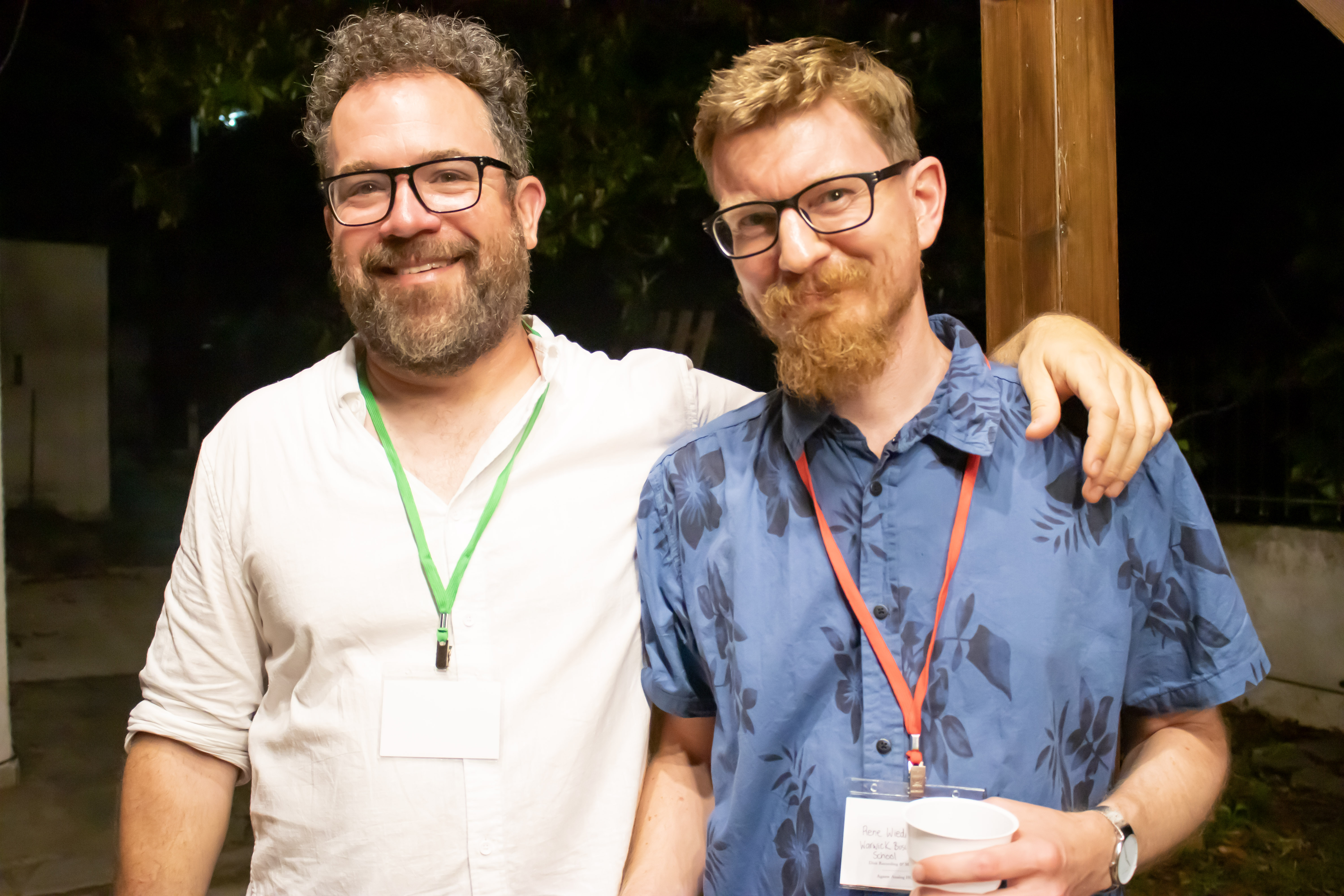 Michael Dixon (Lathecuts.com) and Rene Wiedner (Warwick Business School).
Michael Dixon (Lathecuts.com) and Rene Wiedner (Warwick Business School).
In view of the fact that one of the most important aspects of disk mastering is the ability to accurately listen to what is happening, a most informative presentation was delivered by mastering engineer George Bokos, introducing the massive custom monitor loudspeakers he designed along with Gregory Karakatsanis.
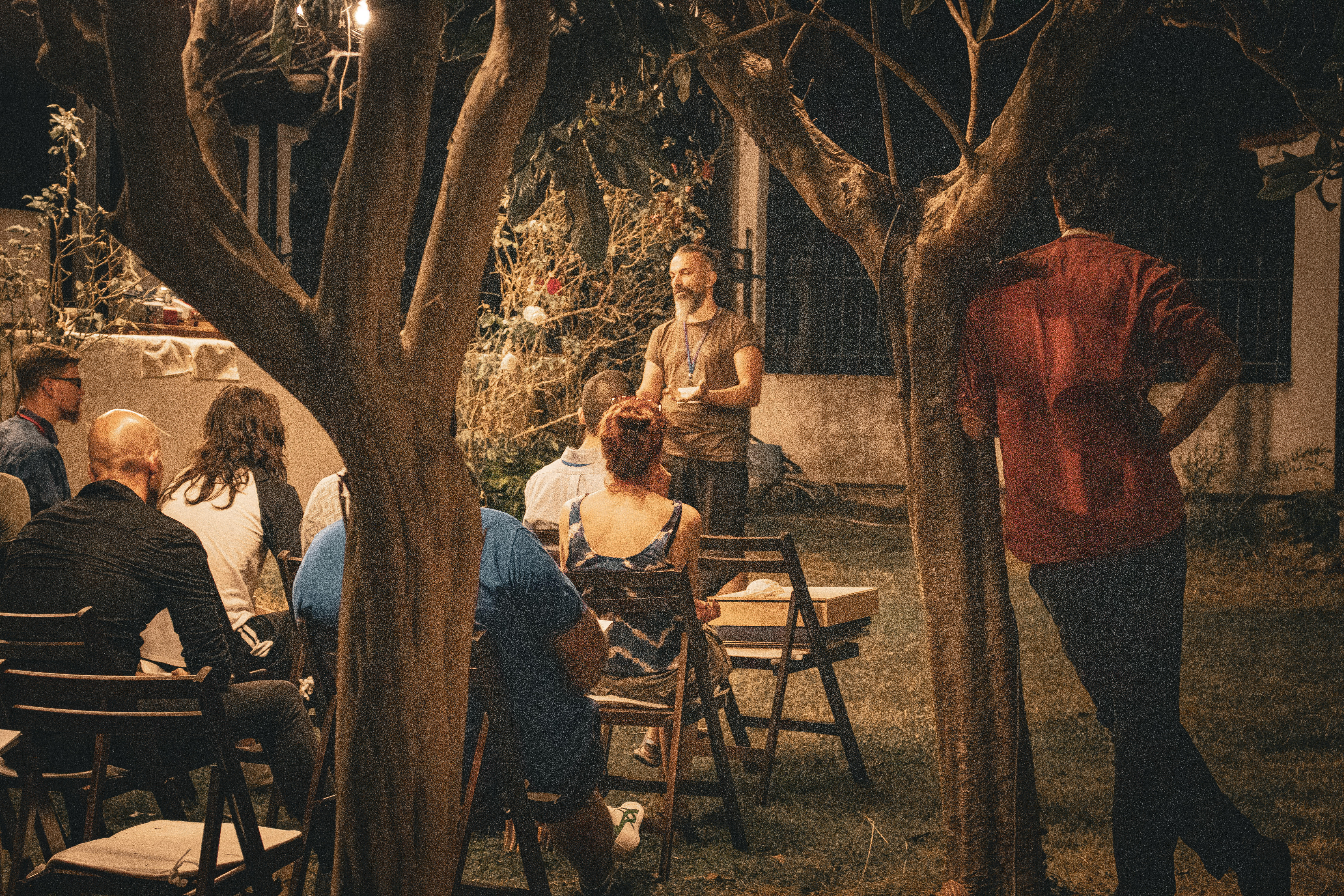 Mastering engineer George Bokos (Grindhouse Studios Athens/Spine Audio) during his presentation.
Mastering engineer George Bokos (Grindhouse Studios Athens/Spine Audio) during his presentation.
Their company, Spine Audio, based in Athens, Greece, takes on the design and construction of custom monitoring solutions for recording and mastering studios, along with installation and fine tuning in the room. For the occasion, they brought over a very impressive pair of human-height three-way loudspeakers, driven by six power amplifiers with active crossovers. The Spine Audio Monitors were used throughout the event as the main monitoring system, much to the excitement of several pairs of well-trained ears!
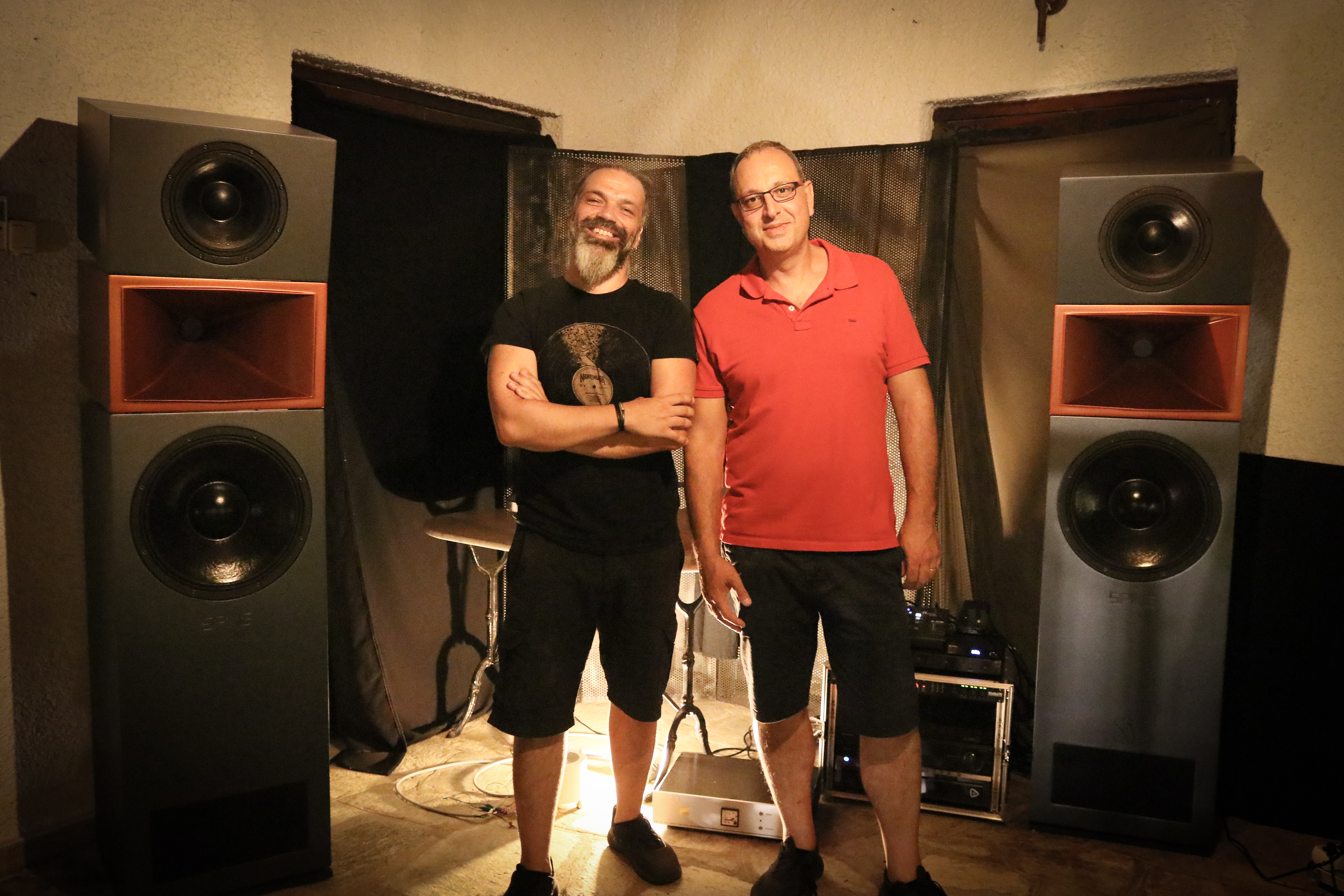 George Bokos and Gregory Karakatsanis of Spine Audio, with their monitor loudspeakers on either side.
George Bokos and Gregory Karakatsanis of Spine Audio, with their monitor loudspeakers on either side.
Tassos Alexopoulos of Epos Labs from Kastro, a small town in the deep south of Greece, presented a new disk recording stylus he designed. Tassos used a microscopic piece of tungsten carbide, shaped as a tiny triangular stylus, mounted on an aluminum shank, to ensure low mass. Epos Labs has released a series of limited edition lathe-cut records, cut using this new stylus.
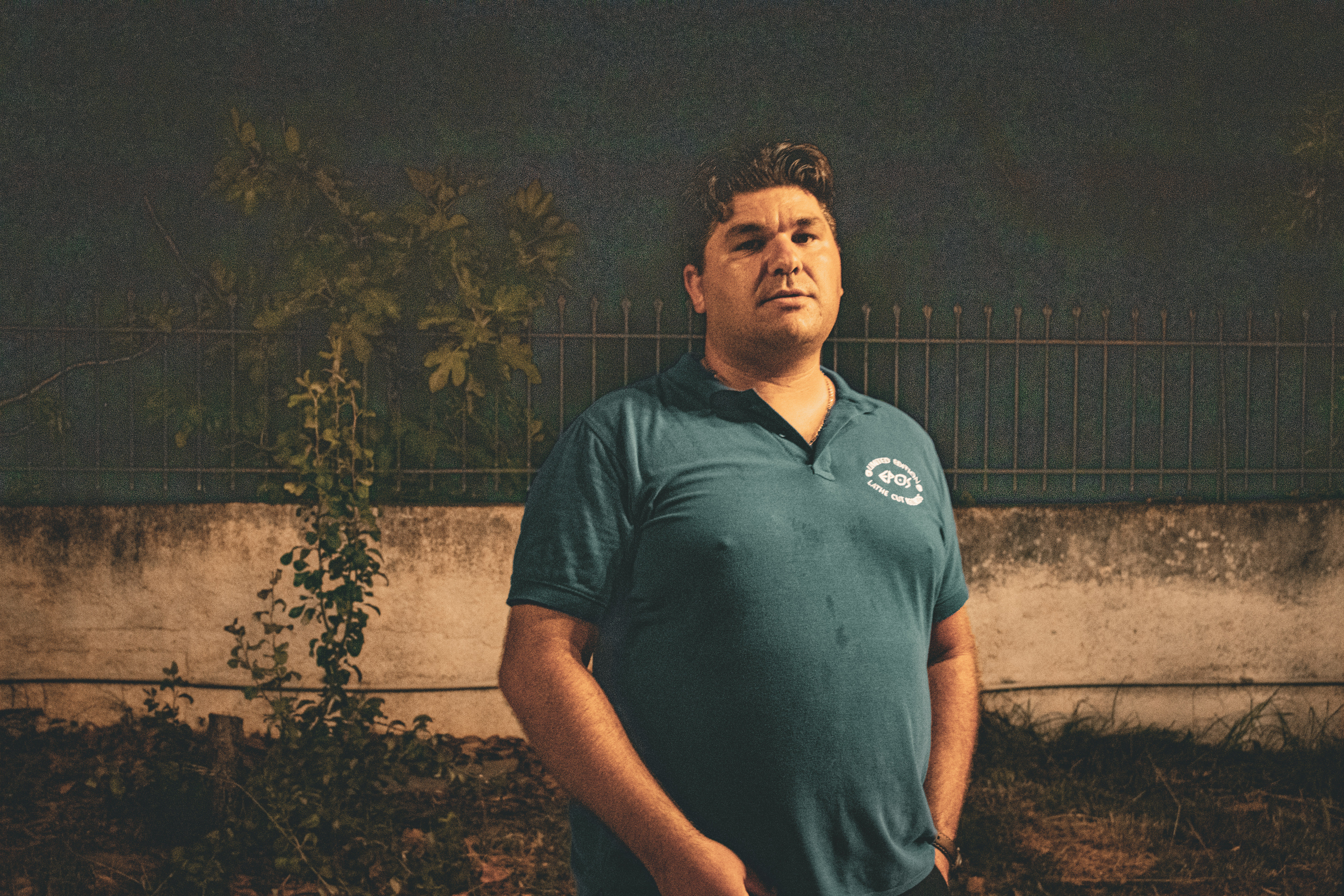 Tasos Alexopoulos of Epos Labs.
Tasos Alexopoulos of Epos Labs.
Tassos explained disk recording stylus facet geometry in great detail, explaining how he arrived at the current design, while also explaining the equipment he used to shape the stylus. On display were some examples of Epos Labs electronics, used for the disk recording process. One of the units was an RIAA pre-emphasis circuit, for use with moving iron cutter heads.
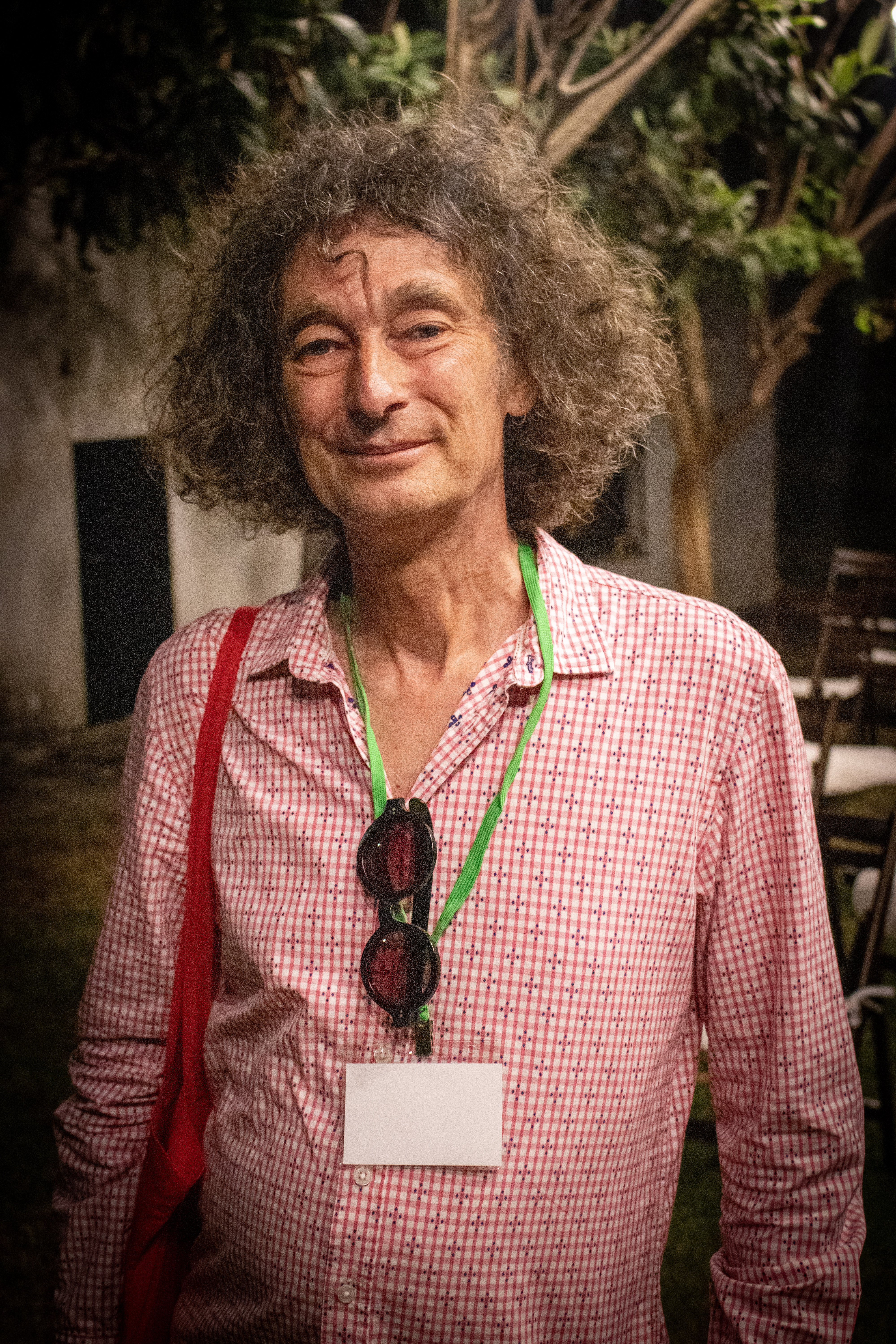 Crispin Murray of Guilde Productions Ltd at the International Disk Recording and Mastering Convention 2023.
Crispin Murray of Guilde Productions Ltd at the International Disk Recording and Mastering Convention 2023.
One of the legendary figures of the recording industry in the UK, Crispin Murray, talked about his current work in keeping the few remaining Neumann VMS80 and VMS70 disk mastering Lathes in the UK up and running, along with the development of various upgrades for improved performance. Crispin has developed new boards for the cutting amplifier racks responsible for driving the cutter heads, as well as ceramic nuts for the leadscrew of the VMS80 lathe, a part that is notoriously difficult to make.
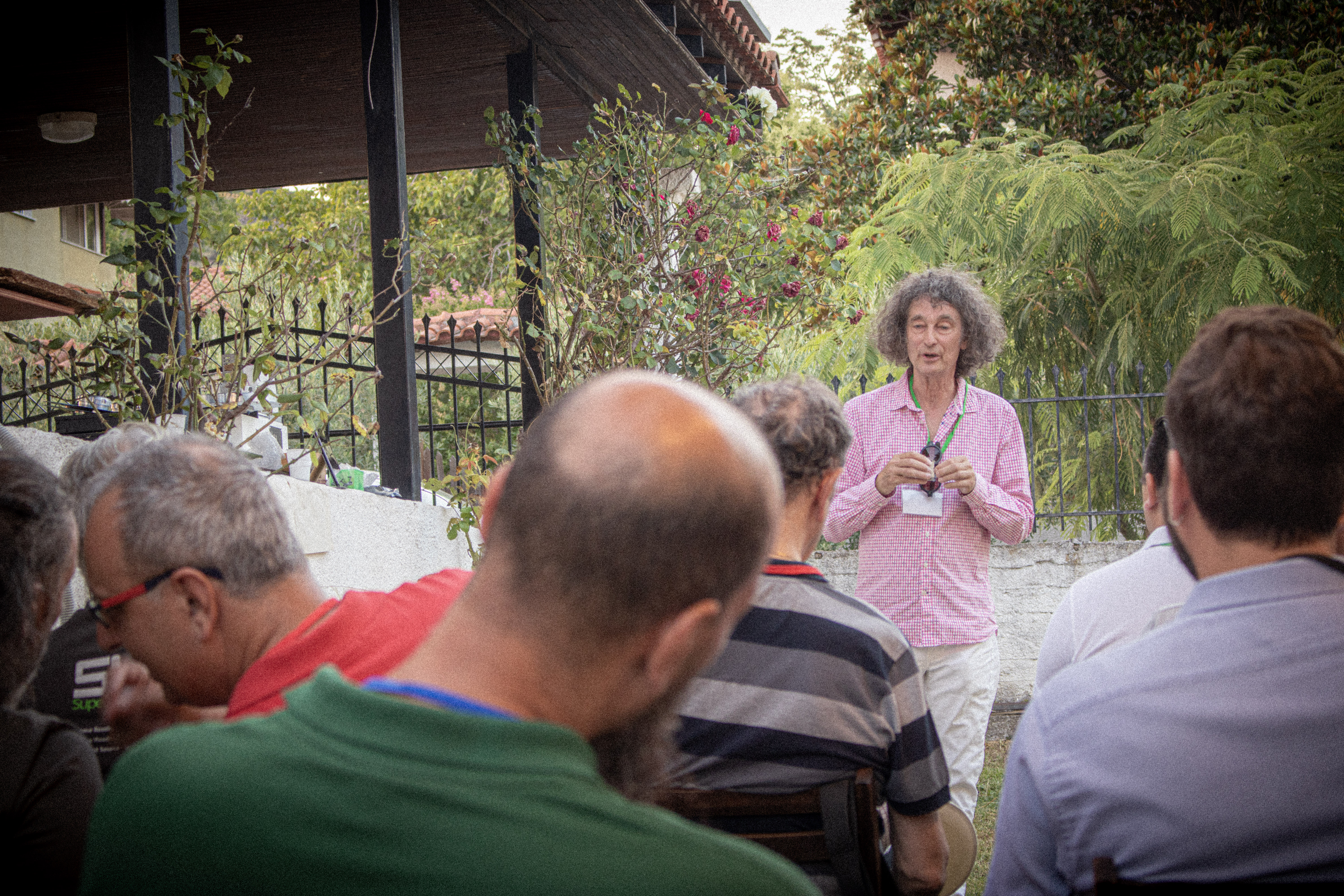 Crispin Murray (Guilde Productions Ltd) addressing the audience.
Crispin Murray (Guilde Productions Ltd) addressing the audience.
As a studio technician, Crispin is known for his work at Metropolis Studios, Air Studios, Abbey Road Studios, Townhouse Studios, the Manor Mobile (as Chief Engineer) and the BBC transcription recording unit. He has worked with artists ranging from John Lennon and the Rolling Stones to Led Zeppelin, U2, Phil Collins, Bonnie Tyler and Madonna.
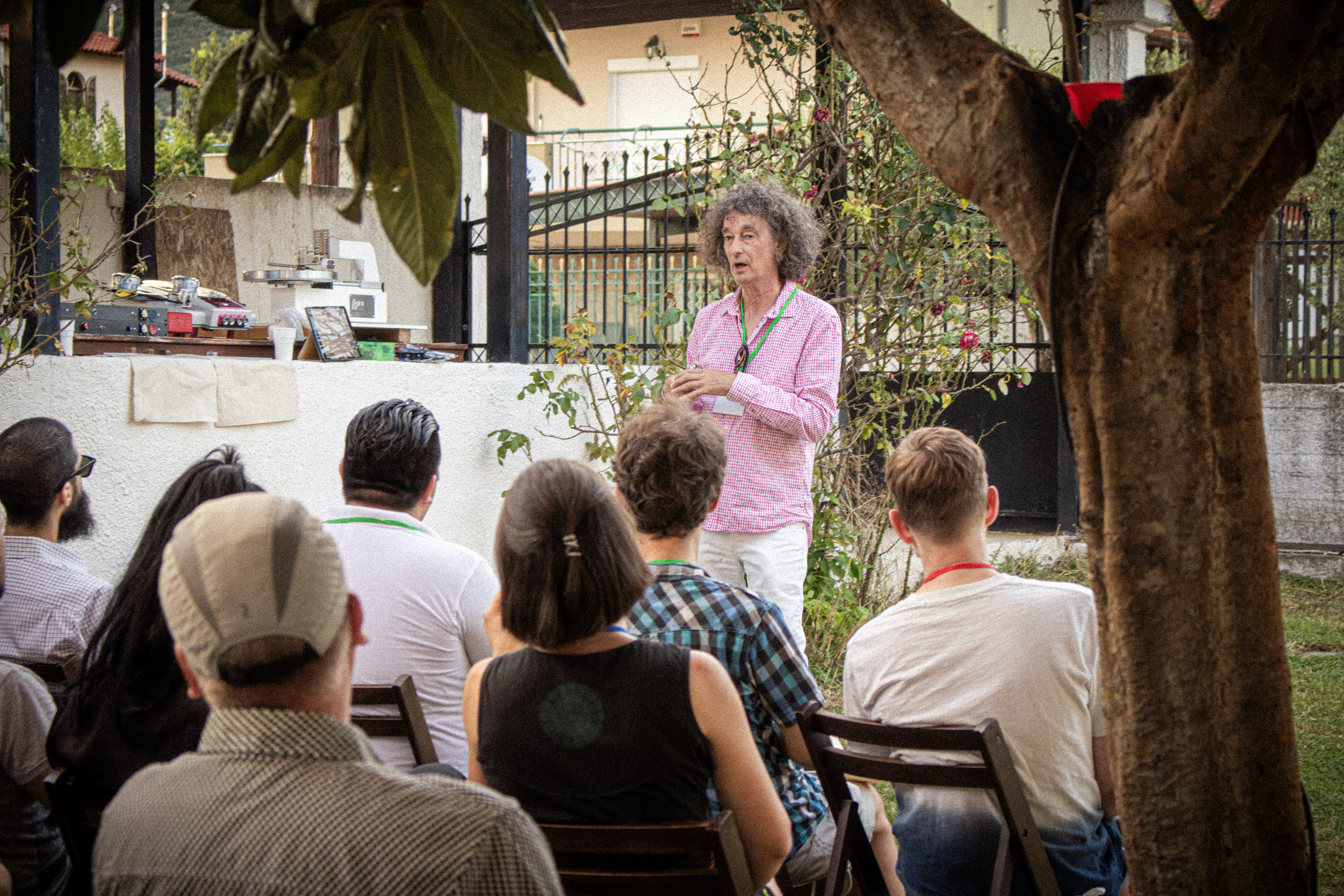 Crispin Murray (Guilde Productions Ltd) in action, presenting his work.
Crispin Murray (Guilde Productions Ltd) in action, presenting his work.
Crispin discussed the various Neumann lathes and their inner workings, explaining the various challenges encountered in their adjustment and maintenance. He offered a description of the sonic advantages of the various modifications he has developed for these disk mastering systems and hinted at his plans for further developments. After his presentation, Crispin and I discussed the new Agnew Analog Type 602 cutter head and he expressed interest in developing the electronics for it, peaking the interest of the crowd that had gathered around us.
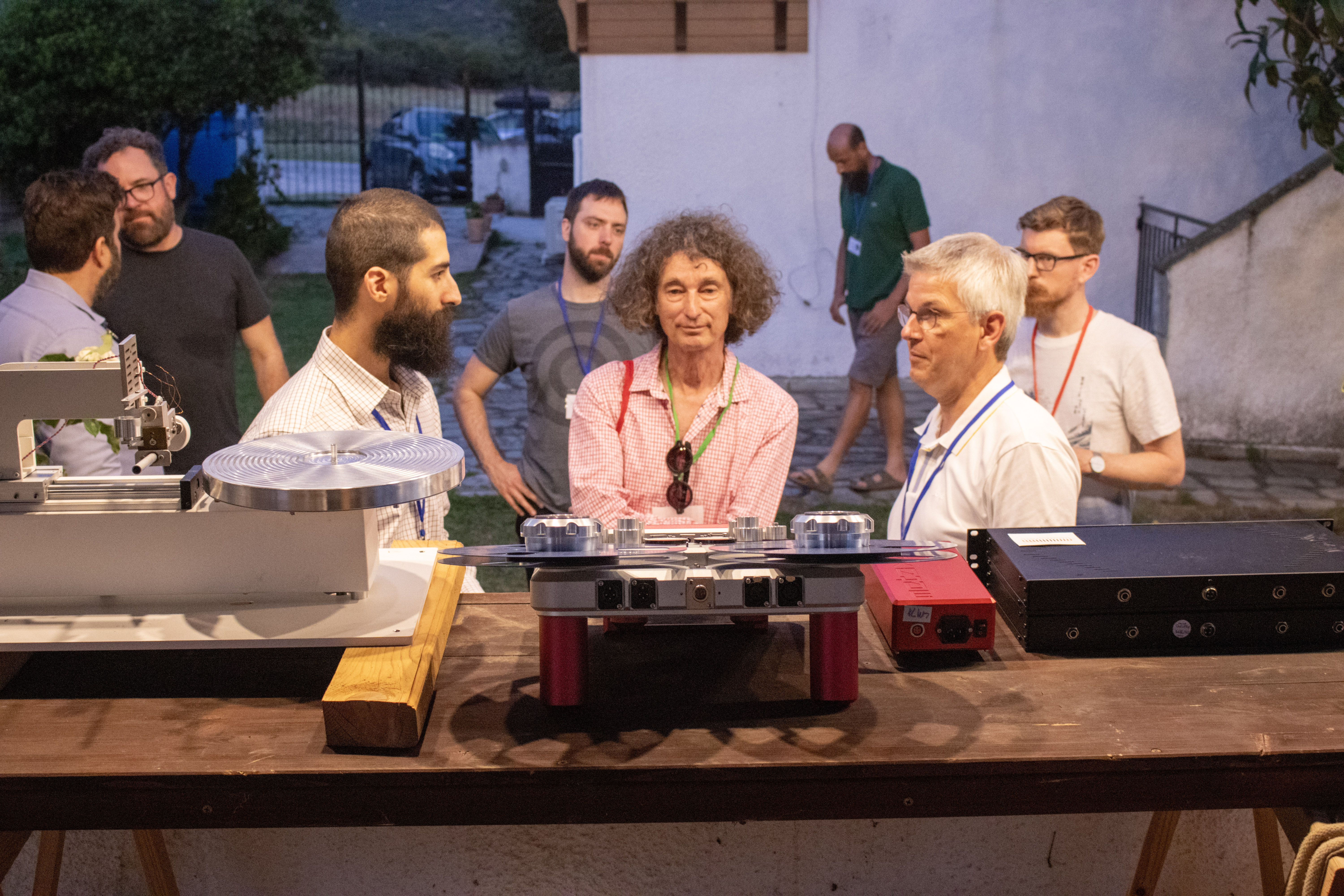 From left to right, Janis Aslanidis (Well of Souls Studio), Michael Dixon (Lathecuts.com), J. I. Agnew (Agnew Analog), Oli Morgan (Abbey Road Studios), Crispin Murray (Guilde Productions Ltd), Kostas Stamatakos (eksartimata.gr/Agnew Analog), Miles Showell (Freelance Mastering Engineer at Abbey Road), Rene Wiedner (Warwick Business School), with an Agnew Analog Type 613 disk mastering lathe and a prototype of a new tape machine made by Metaxas and Sins joining forces with Agnew Analog.
From left to right, Janis Aslanidis (Well of Souls Studio), Michael Dixon (Lathecuts.com), J. I. Agnew (Agnew Analog), Oli Morgan (Abbey Road Studios), Crispin Murray (Guilde Productions Ltd), Kostas Stamatakos (eksartimata.gr/Agnew Analog), Miles Showell (Freelance Mastering Engineer at Abbey Road), Rene Wiedner (Warwick Business School), with an Agnew Analog Type 613 disk mastering lathe and a prototype of a new tape machine made by Metaxas and Sins joining forces with Agnew Analog.
A panel discussion featuring Tassos Alexopoulos of Epos Labs, Michael Dixon of LatheCuts.com, Rene Wiedner of Warwick Business School and myself, focused on the current state of the industry regarding the availability and quality of blank recording disks and disk recording stylii. The discussion conveyed the latest information regarding new developments in this sector and when we should expect to see more variety in the offerings for blanks and stylii. Fortunately, there are several parties in the process of starting production, which will hopefully alleviate the current shortages with the constantly increasing demand. Technical details of the manufacturing processes were revealed and exchanged, indicating that a new era of collaboration and sharing has begun in our industry, in great contrast to how it used to be just a few decades ago.
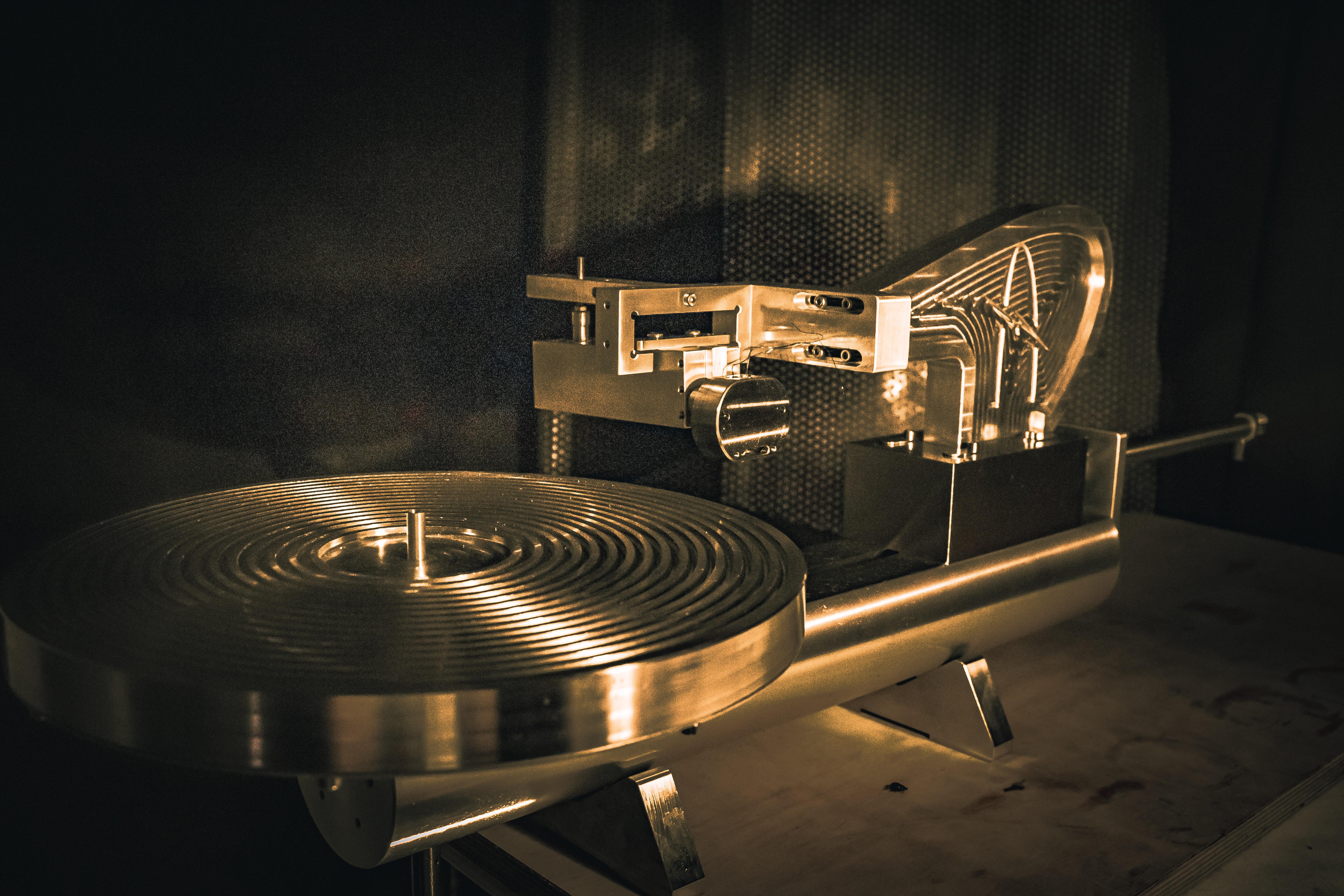 The new Agnew Analog Reference Instrument Type 612 disk mastering lathe.
The new Agnew Analog Reference Instrument Type 612 disk mastering lathe.
My own presentation focused on the Agnew Analog Reference Instrument Type 612, a new disk mastering lathe of my own design with many innovative features.
 J. I. Agnew (Agnew Analog) in front of an audience, with Sabine Agnew-Steldinger filming.
J. I. Agnew (Agnew Analog) in front of an audience, with Sabine Agnew-Steldinger filming.
A hydrodynamic oil-bath main bearing unit supports the incredibly accurate vacuum platter, a floor standing direct-drive motor delivers 2 Nm of torque to the platter, a hand-scraped slideway is machined directly on the lathe bed and a hydraulic system is responsible for the actuation of the carriage, eliminating the traditional leadscrew. As global demand for vinyl records is still very much on the rise, with new manufacturing facilities starting up all around the world, the supply of vintage lathes has dried up and their original manufacturers have all long gone out of business.
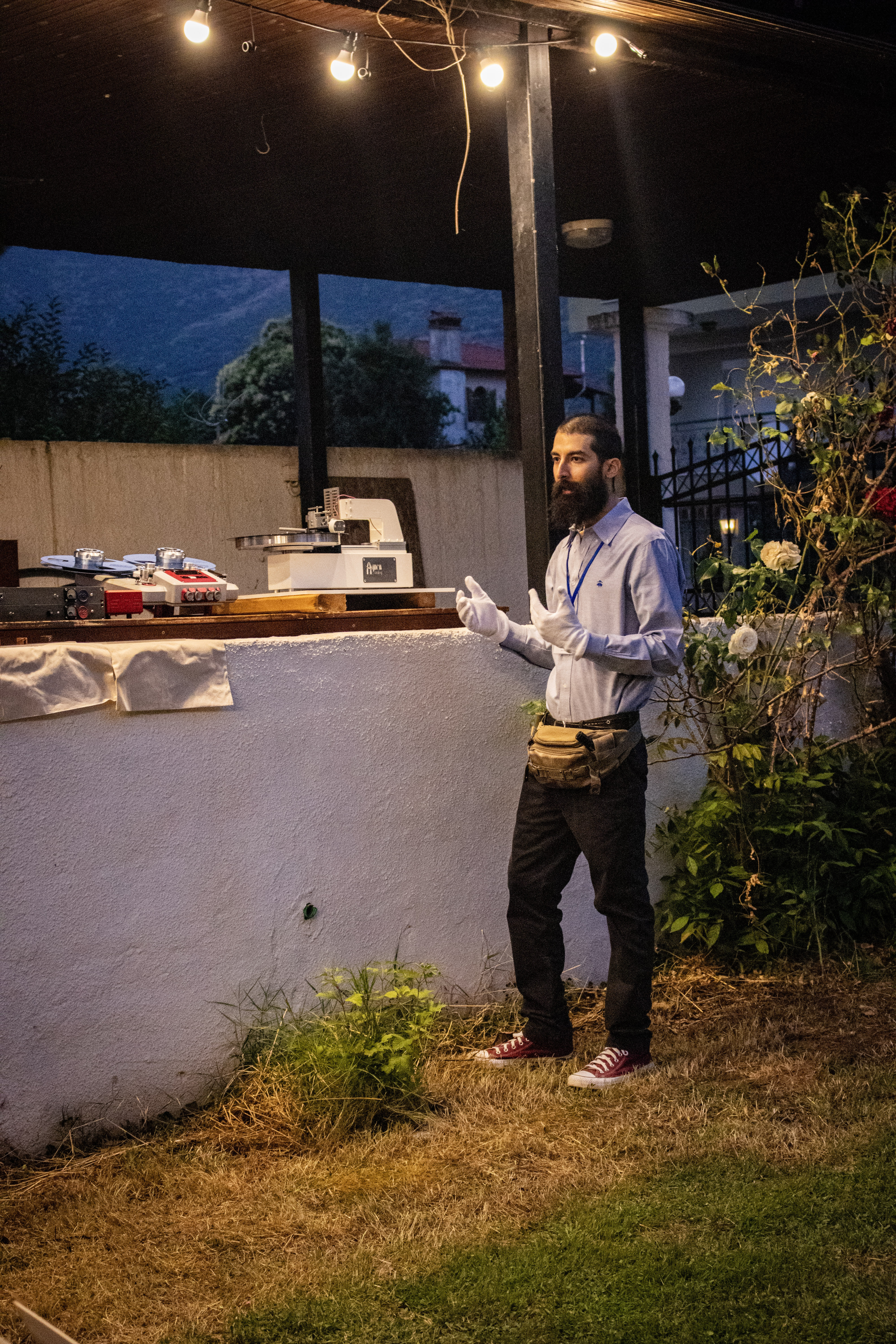 J. I. Agnew (Agnew Analog) describing the development from the Type 613 lathe to the Type 612.
J. I. Agnew (Agnew Analog) describing the development from the Type 613 lathe to the Type 612.
A new disk mastering lathe, easily available and backed by long term customer support, was warmly welcomed by the participants and the news quickly spread in the industry in the days following the convention.
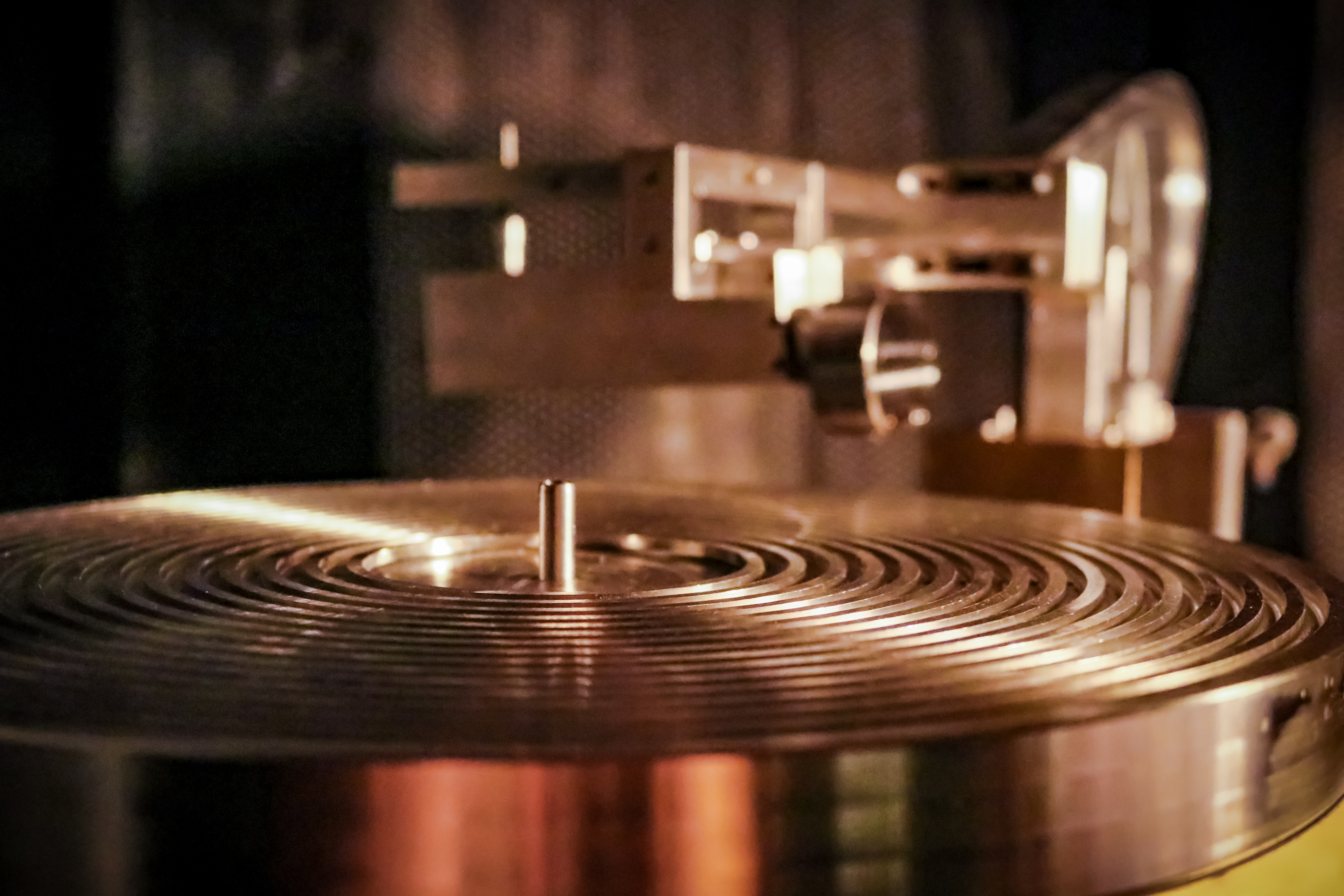 The Agnew Analog Type 6112 vacuum platter on the Type 612 disk mastering lathe.
The Agnew Analog Type 6112 vacuum platter on the Type 612 disk mastering lathe.
The torque capability of the new Agnew Analog Type 631 direct-drive motor is twice as much as the Lyrec SM-8 could offer, a motor that was found under many Neumann lathes and Lyrec lathes.
 J. I. Agnew (Agnew Analog) demonstrating the Agnew Analog Reference Instrument Type 612 disk mastering lathe. To his left, on the other side of the Spine Audio monitor loudspeaker is Yannis Ioannidis (Polygram) and to his right is Miles Showell (freelance mastering engineer at Abbey Road Studios).
J. I. Agnew (Agnew Analog) demonstrating the Agnew Analog Reference Instrument Type 612 disk mastering lathe. To his left, on the other side of the Spine Audio monitor loudspeaker is Yannis Ioannidis (Polygram) and to his right is Miles Showell (freelance mastering engineer at Abbey Road Studios).
The hydraulic actuation system for the carriage was partly inspired by the Hydrofeed lathe of J.B. Minter, but in a more modern configuration that allows automations of recording pitch to be implemented. The hydrodynamic oil-bath bearing units have been field-tested as a standalone unit for many years, used primarily to convert Scully lathes, the Presto 8DG, Presto 14B and several models of the Fairchild lathe to direct-drive, with one of the Agnew Analog vacuum platters as a further upgrade.
The grand finale of the event was a tour of the Agnew Analog Precision Engineering Laboratory, where lathes and cutter heads are manufactured.
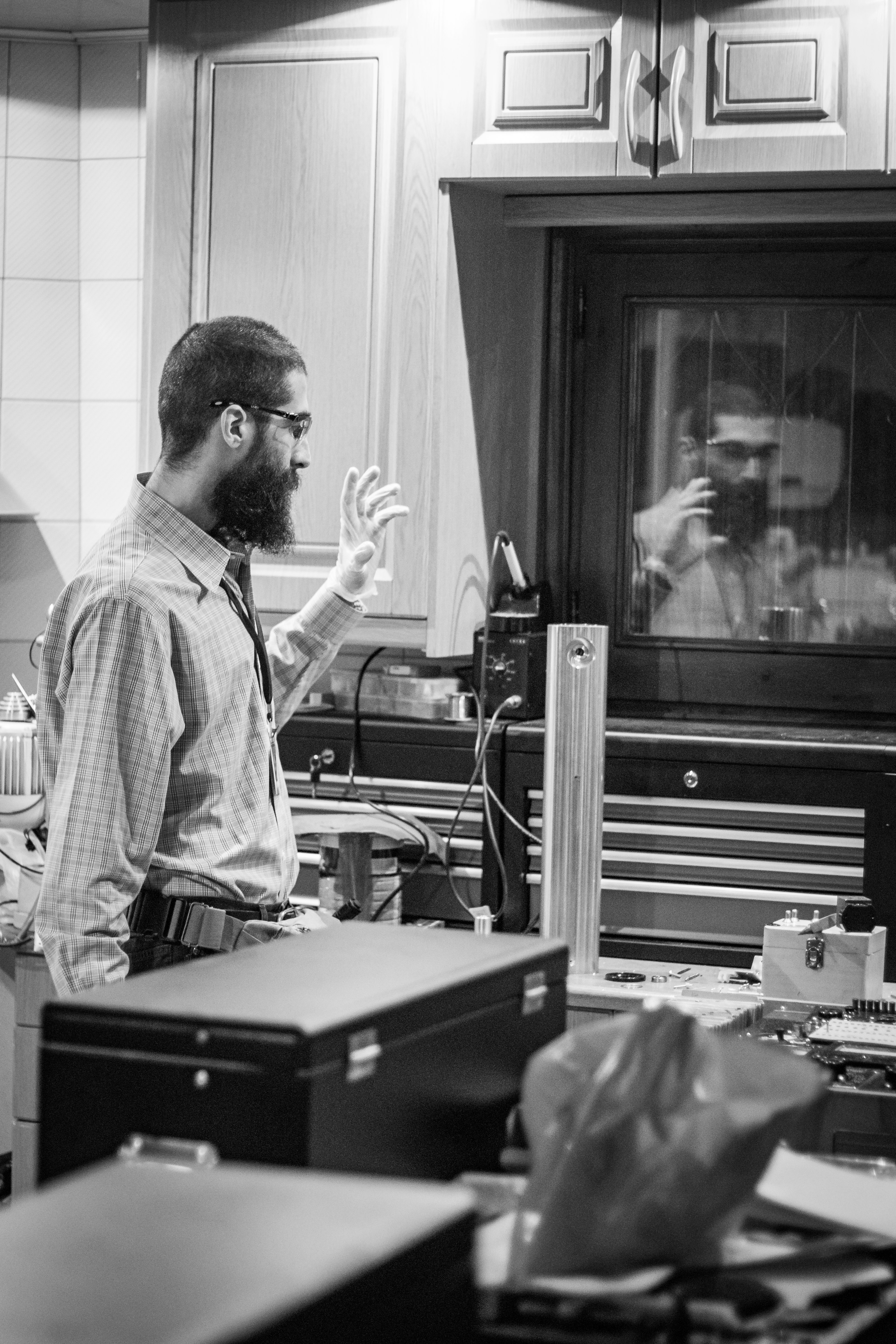 The Agnew Analog Precision Engineering Laboratory, with a Type 612 lathe bed on the workbench, awaiting hand scraping.
The Agnew Analog Precision Engineering Laboratory, with a Type 612 lathe bed on the workbench, awaiting hand scraping.
The space is filled to the brim with rare precision machine tools and vintage measurement instruments, all made between 1900 and 1969.
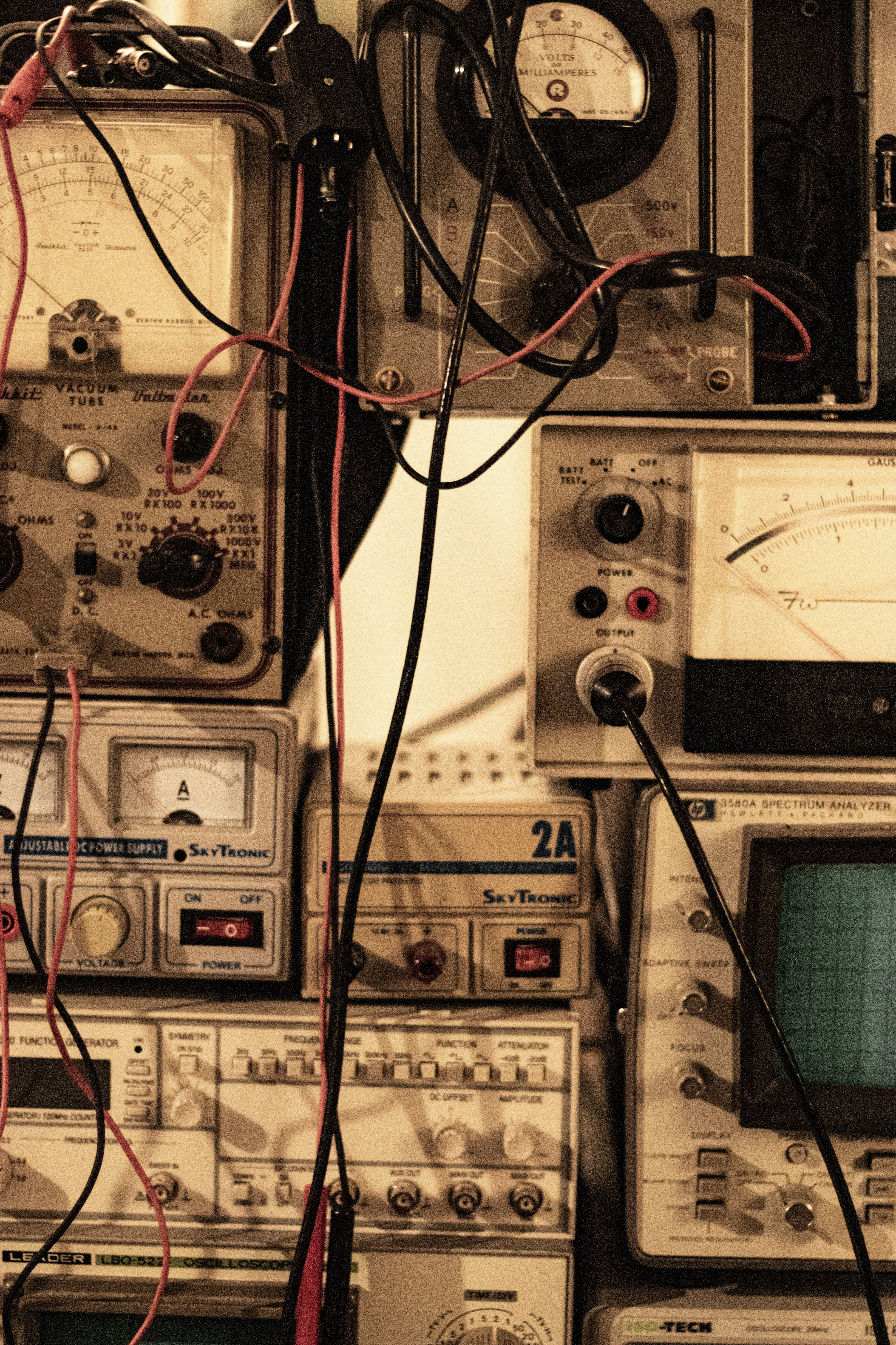 Vintage laboratory measurement instruments at the Agnew Analog Precision Engineering Laboratory, from a time long before Hewlett-Packard went into manufacturing plastic printers.
Vintage laboratory measurement instruments at the Agnew Analog Precision Engineering Laboratory, from a time long before Hewlett-Packard went into manufacturing plastic printers.
Basic principles of mechanical accuracy were demonstrated and the lost art of scraping for flatness and bearing was explained in detail.
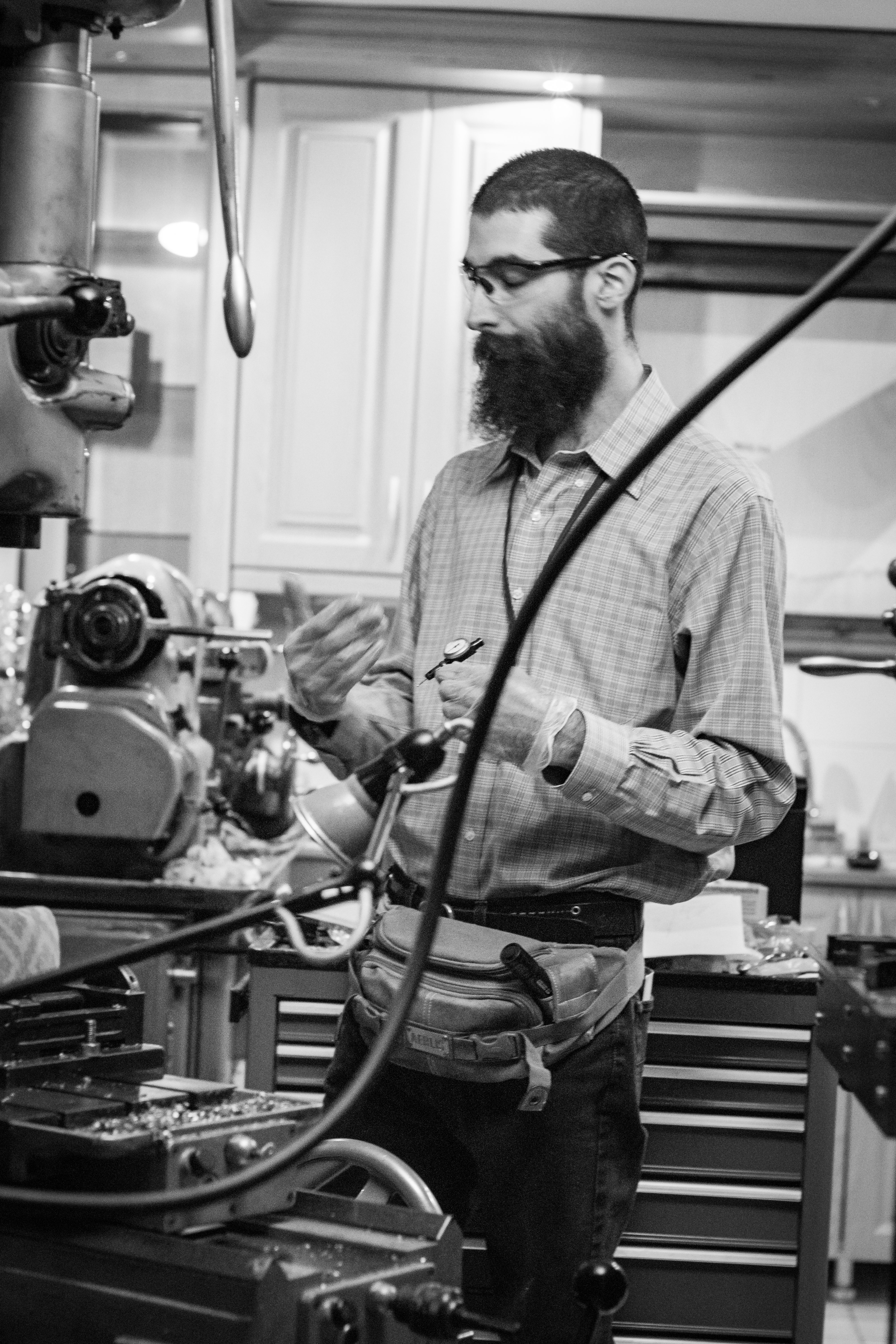 J. I. Agnew in the workshop with a Moore Jig Borer in the foreground and a Hardinge HLV lathe in the background.
J. I. Agnew in the workshop with a Moore Jig Borer in the foreground and a Hardinge HLV lathe in the background.
The audience then got to experience a prototype of a new tape machine in development, called the "Squelette", a collaboration between Metaxas and Sins and Agnew Analog, intended for professional recording and mastering facilities.
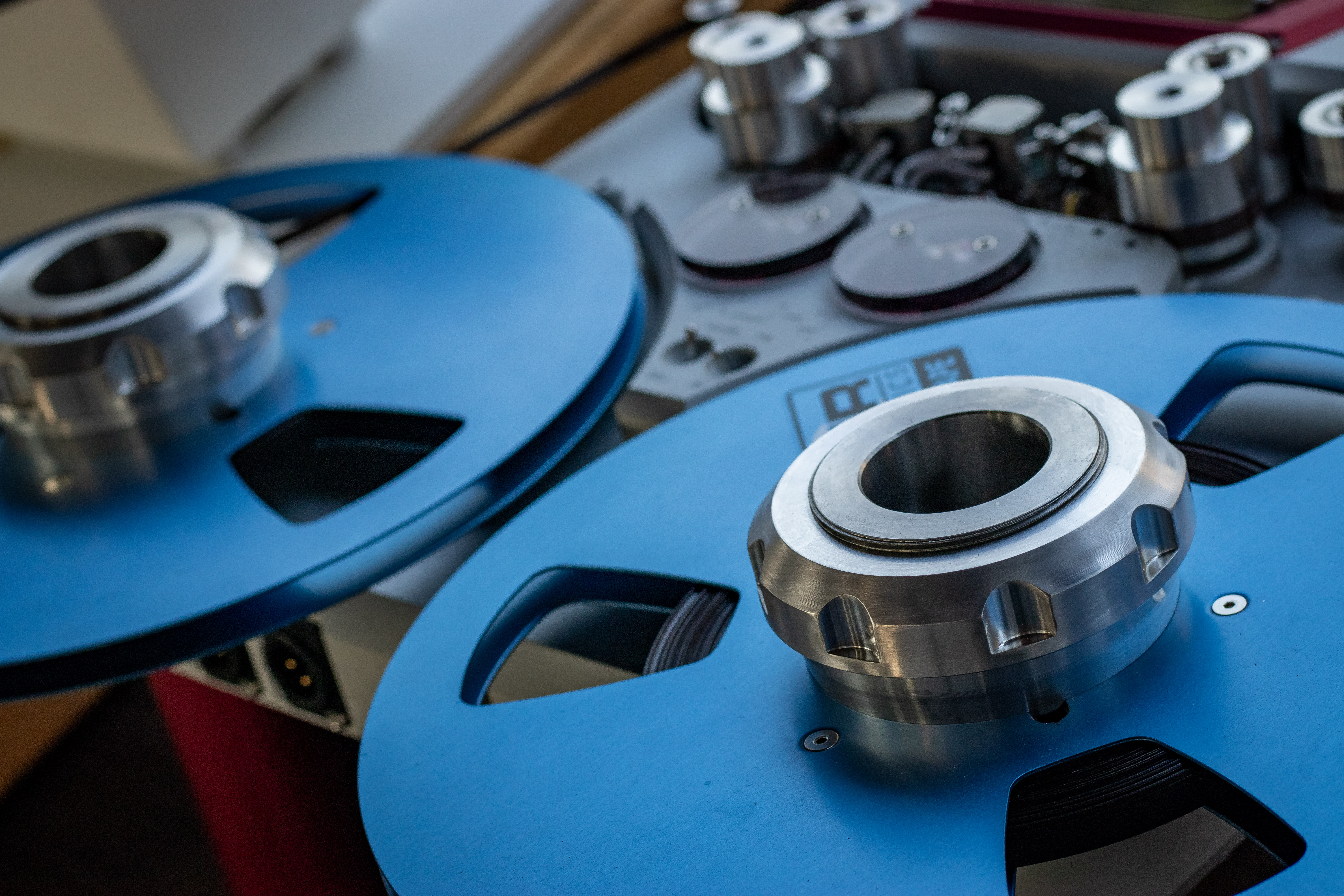 The Squelette, a prototype tape machine in current development, the outcome of the collaborative efforts of Metaxas and Sins and Agnew Analog.
The Squelette, a prototype tape machine in current development, the outcome of the collaborative efforts of Metaxas and Sins and Agnew Analog.
It is an innovative dual-capstan pinch-roller-less design (imagine an Ampex ATR-100 series machine, but with two capstans) with the extravagant aesthetics and no-compromise approach to sonic quality that Kostas Metaxas has become associated with.
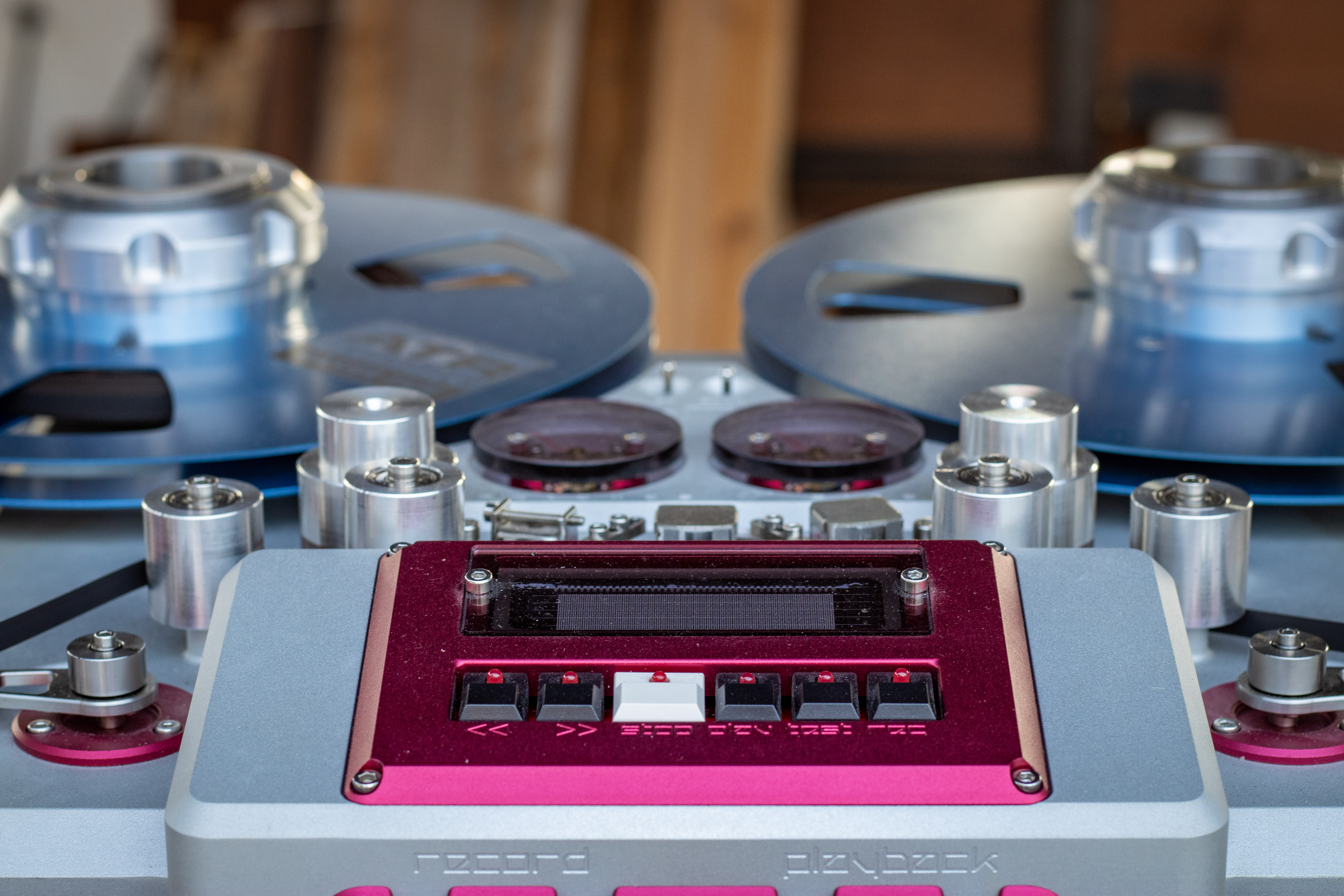 An innovative, dual capstan, pinch-roller-less tape transport.
An innovative, dual capstan, pinch-roller-less tape transport.
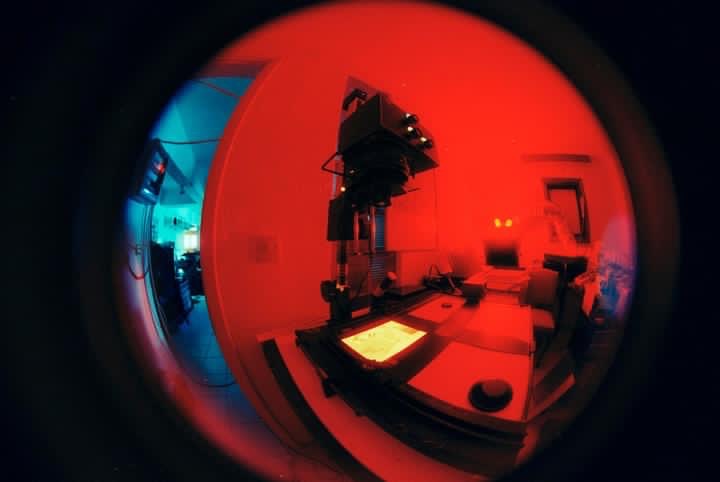
The photographic darkroom at Agnew Analog.
The tour continued with the photographic darkroom, where film is developed and wet printing is done the old-fashioned way, but the highlight was the historic John Broadwood & Sons Grand Piano, manufactured in London in 1904, which inspired George Bokos to embark on an improvisation on the spot, much to the enjoyment of everyone present.
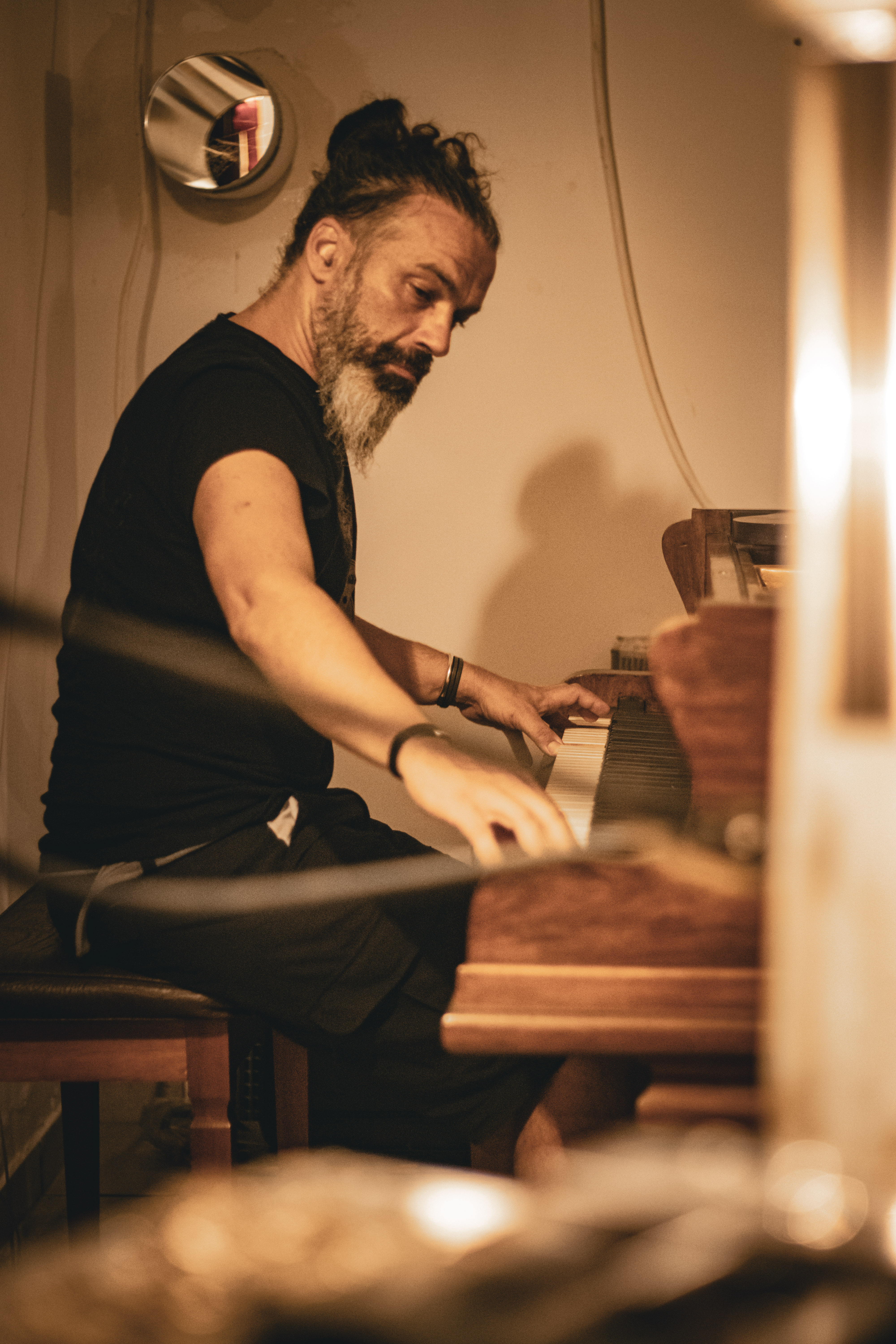
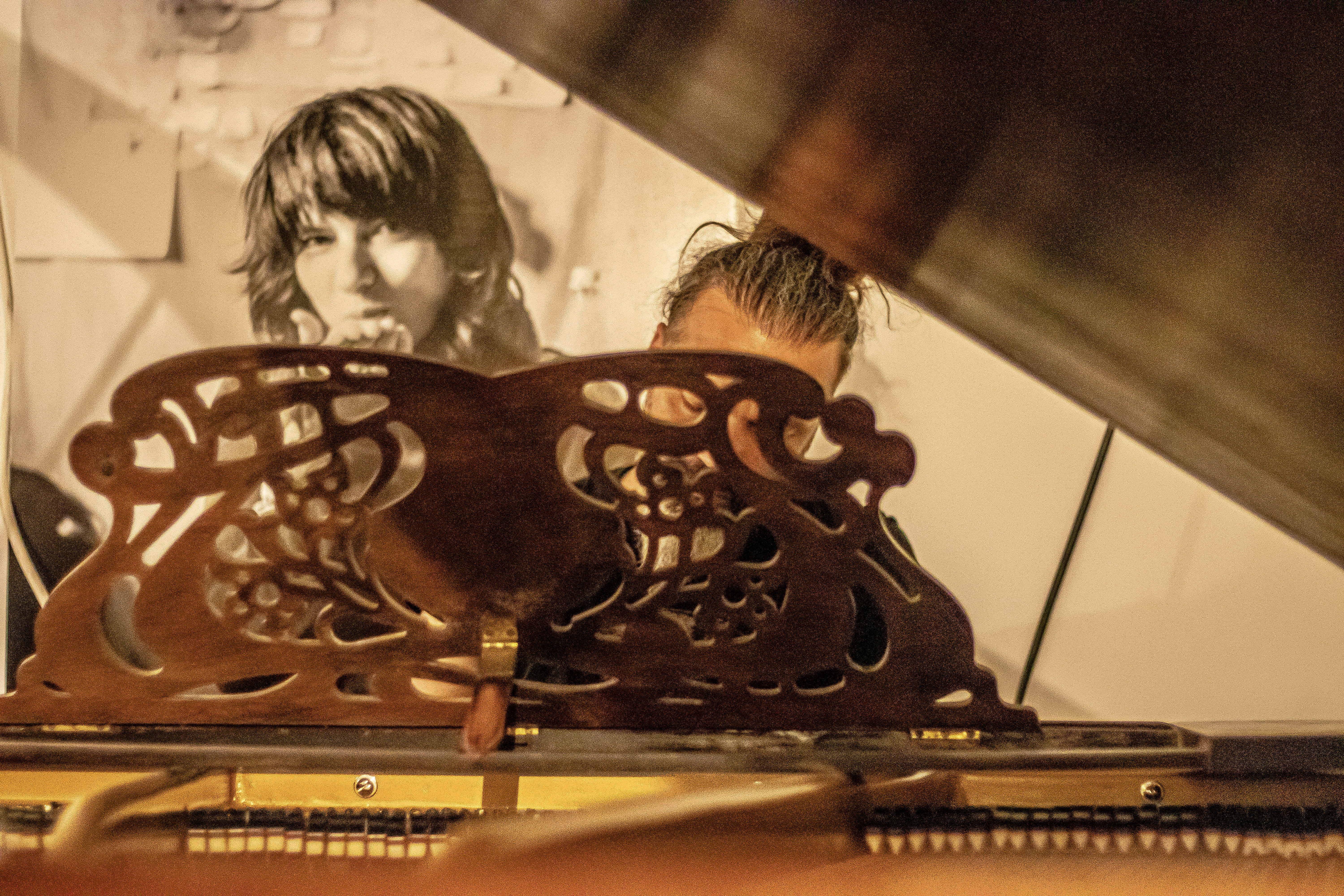 George Bokos (Grindhouse Studios Athens/Spine Audio) with the John Broadwood & Sons grand piano and a large photographic print behind him.
George Bokos (Grindhouse Studios Athens/Spine Audio) with the John Broadwood & Sons grand piano and a large photographic print behind him.
The Agnew Analog facility is located on the wine roads of Halkidiki, with several small wineries producing outstanding wine, often from little known local varieties of grapes. Following the presentations, local wine was ritualistically served on an Agnew Analog Reference Instrument Type 6112 vacuum platter, normally used on disk mastering lathes.
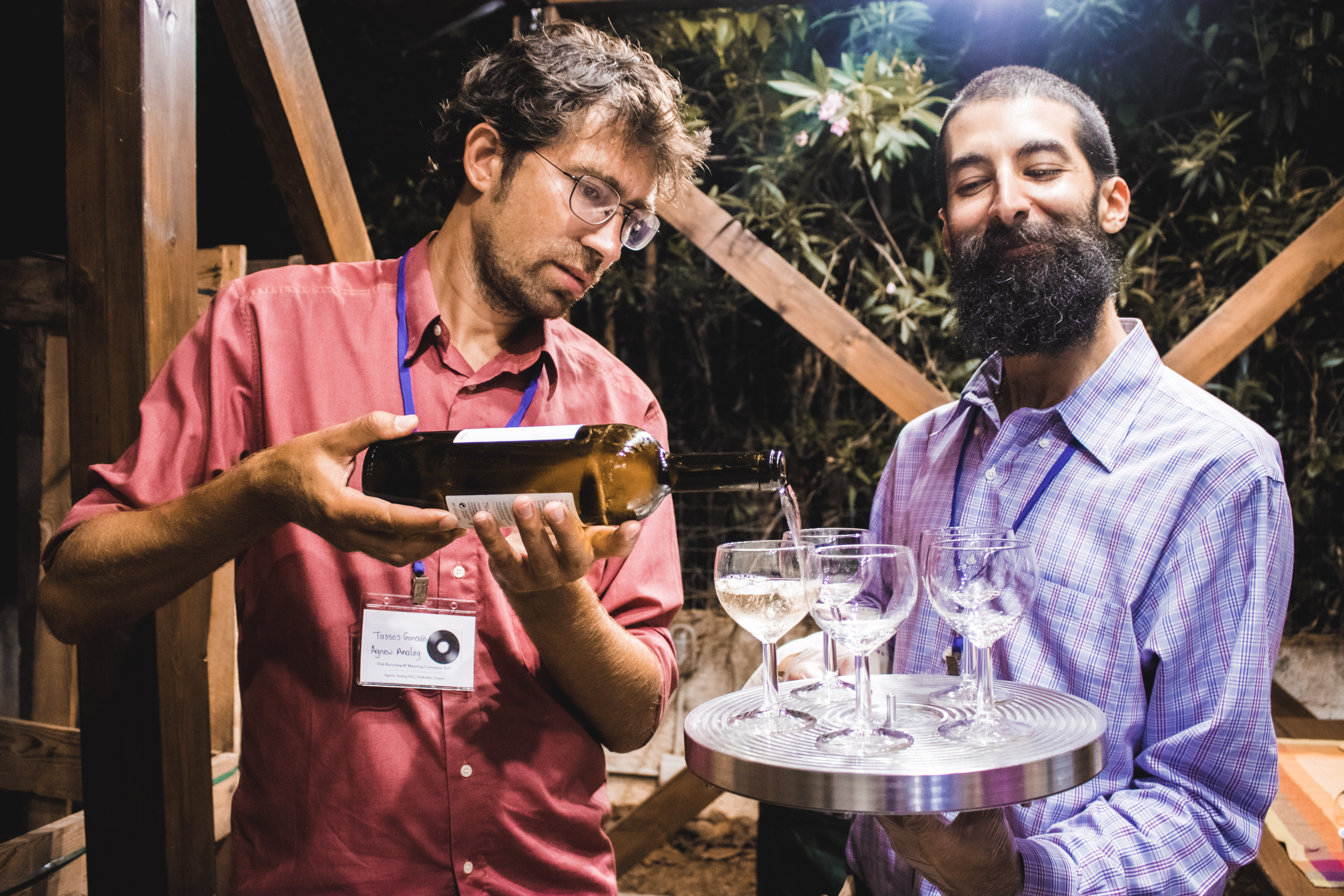 The hosts, Tassos Ganoulis and J. I. Agnew, serving fine local wine on a silver vacuum platter (Agnew Analog Type 6112).
The hosts, Tassos Ganoulis and J. I. Agnew, serving fine local wine on a silver vacuum platter (Agnew Analog Type 6112).
The "social evening" continued until well past midnight with excited discussions and introductions, as the various mastering engineers got to meet each ether in person for the first time.

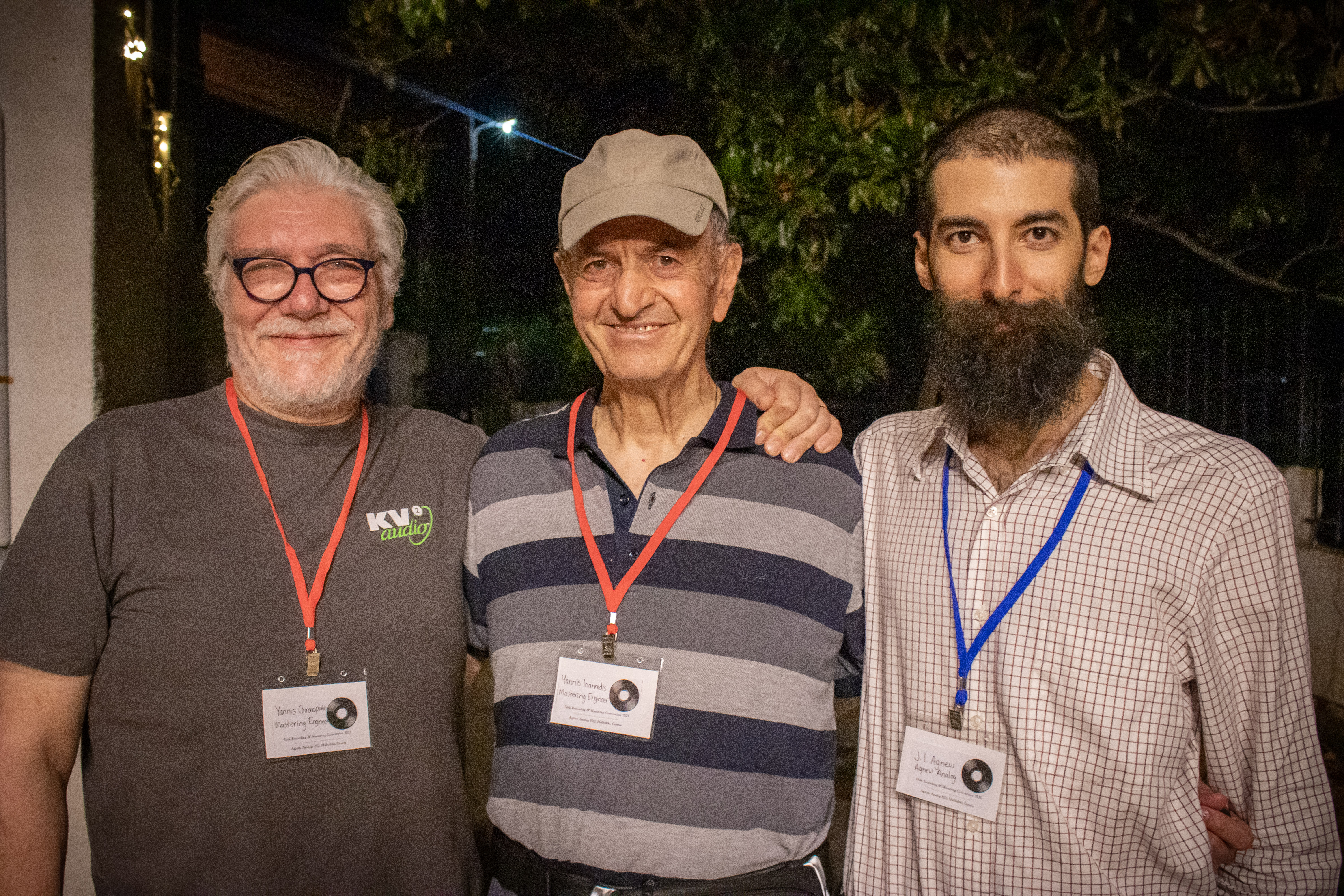 Yannis Chronopoulos (Columbia/Polygram), Yannis Ioannidis (Polygram), J. I. Agnew (Agnew Analog)
Yannis Chronopoulos (Columbia/Polygram), Yannis Ioannidis (Polygram), J. I. Agnew (Agnew Analog)
The photographic coverage of the convention was handled by the incredibly talented Sarah Hamilton of Lebeast Photography, who flew all the way to Greece from Vancouver, BC, Canada, to document this historic event.
Tassos Ganoulis (Agnew Analog), Sarah Hamilton (Lebeast Photography) and J. I. Agnew (Agnew Analog) at the refreshments and snacks hut, preparing for the convention.
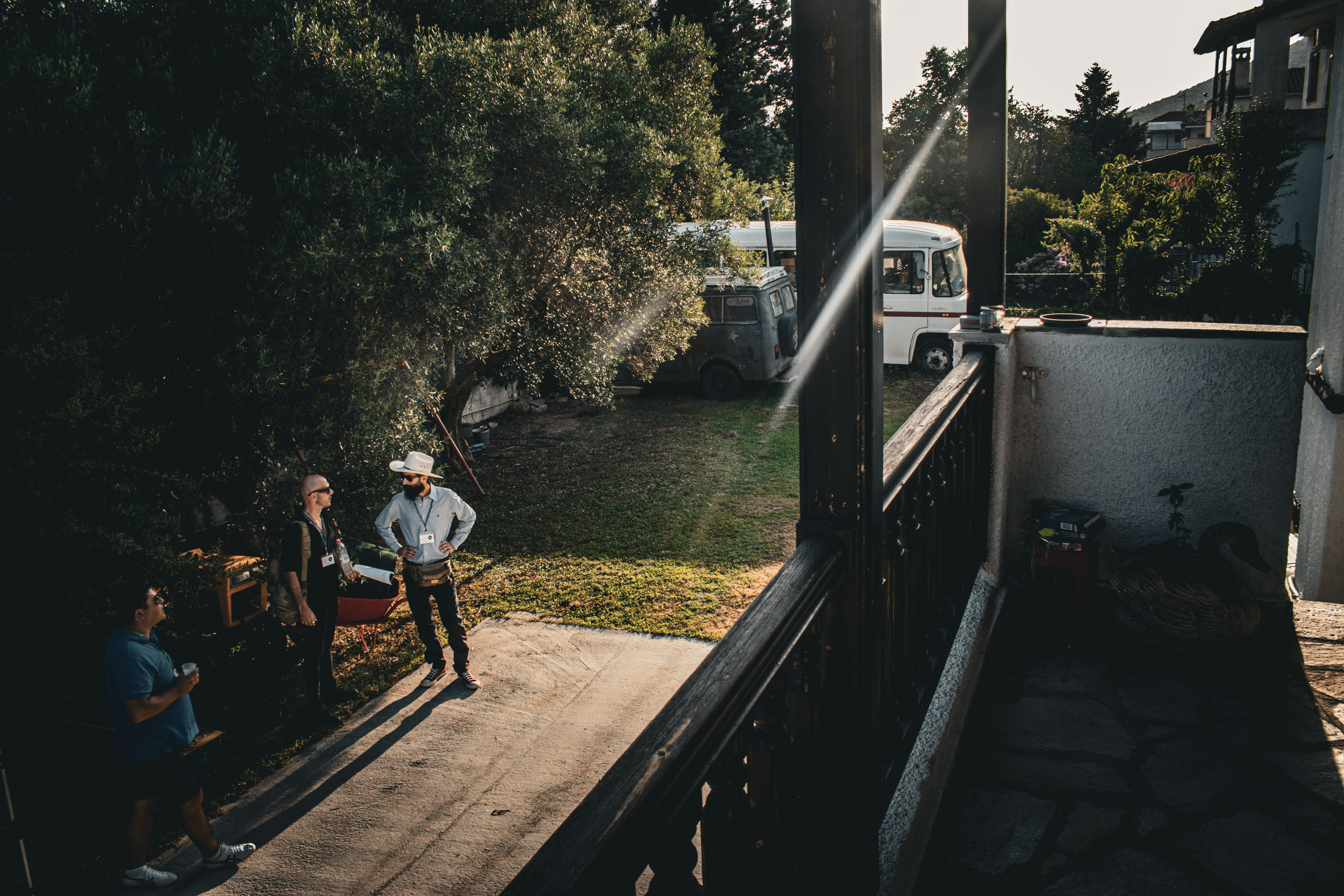 Tasos Alexopoulos (Epos Labs), Thomas Aslanidis (Well of Souls Studios) and J. I. Agnew (Agnew Analog).
Tasos Alexopoulos (Epos Labs), Thomas Aslanidis (Well of Souls Studios) and J. I. Agnew (Agnew Analog).
By now we are all back in our dimly lit caves, cutting records and developing this technology further, until the next occasion to get together and talk about lathes and grooves.
 The sunset at the site of the first International Disk Recording and Mastering Convention.
The sunset at the site of the first International Disk Recording and Mastering Convention.










































.png)








